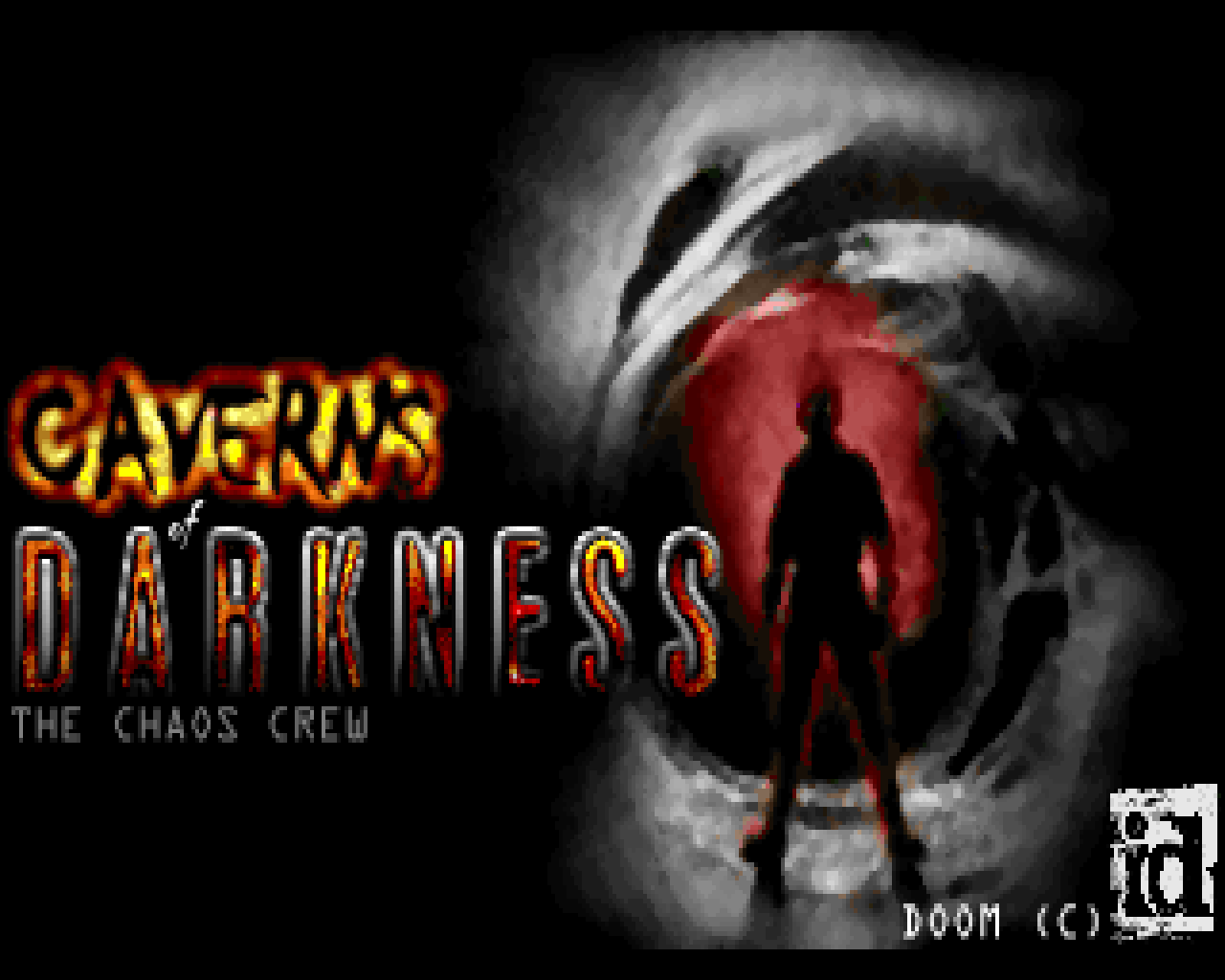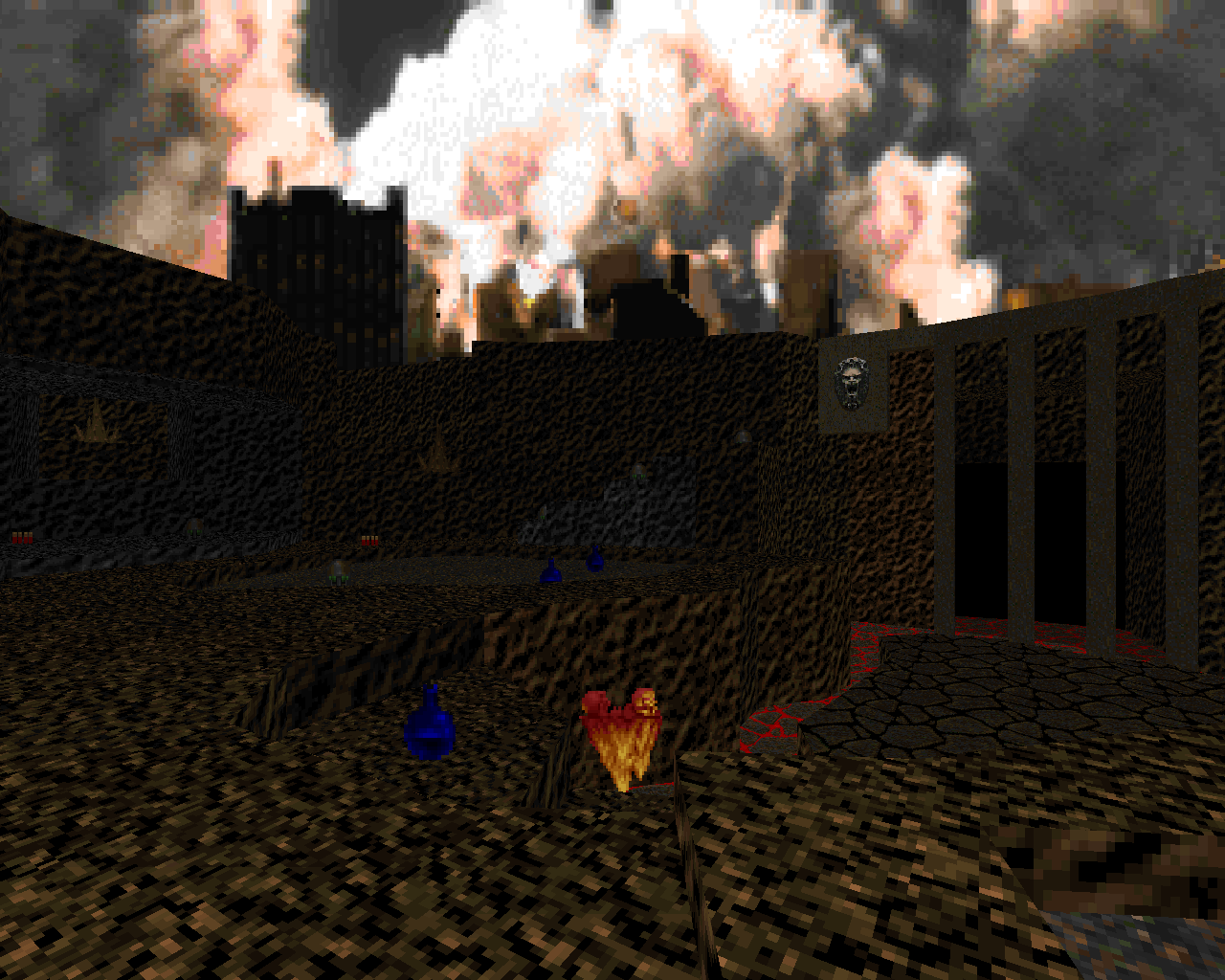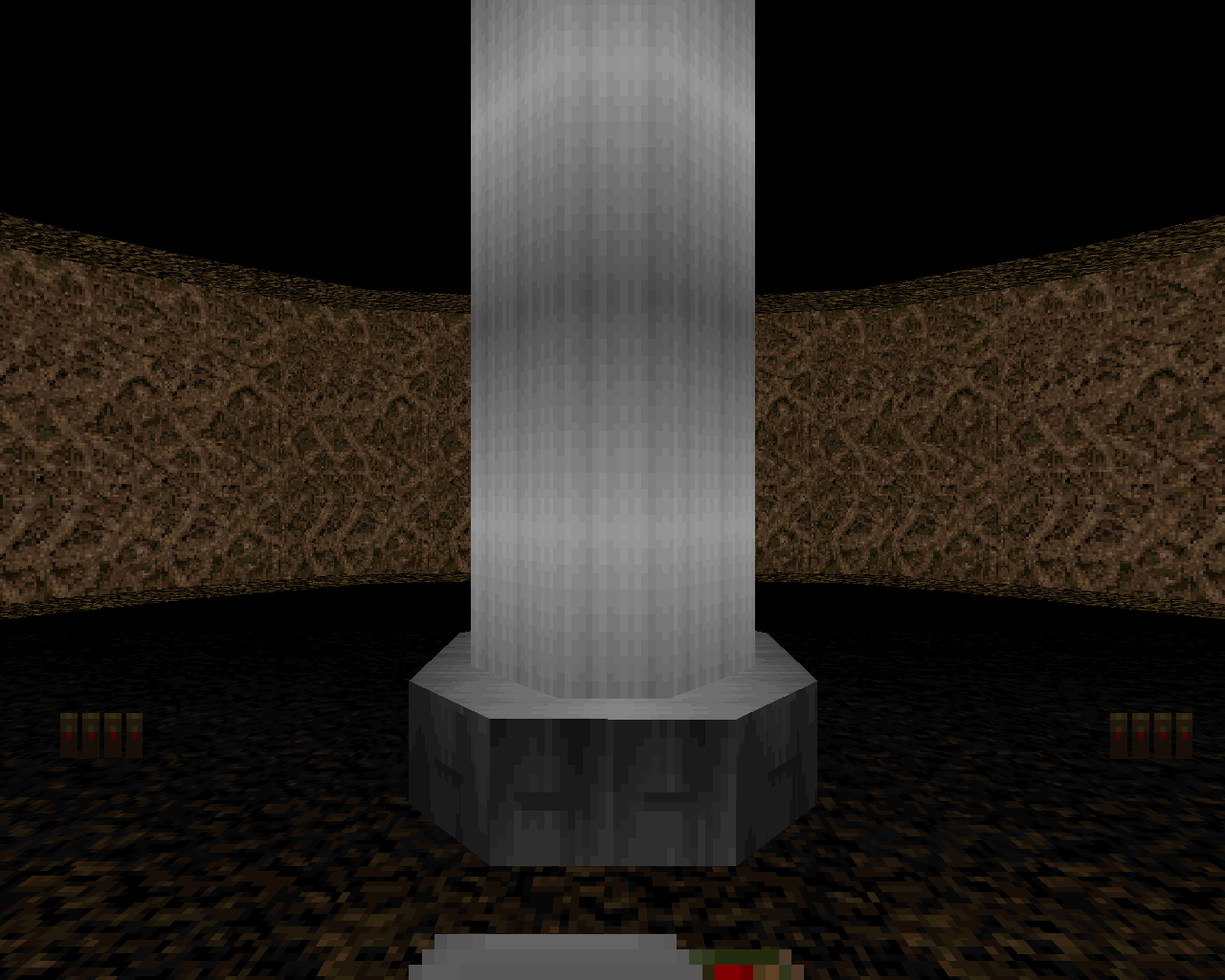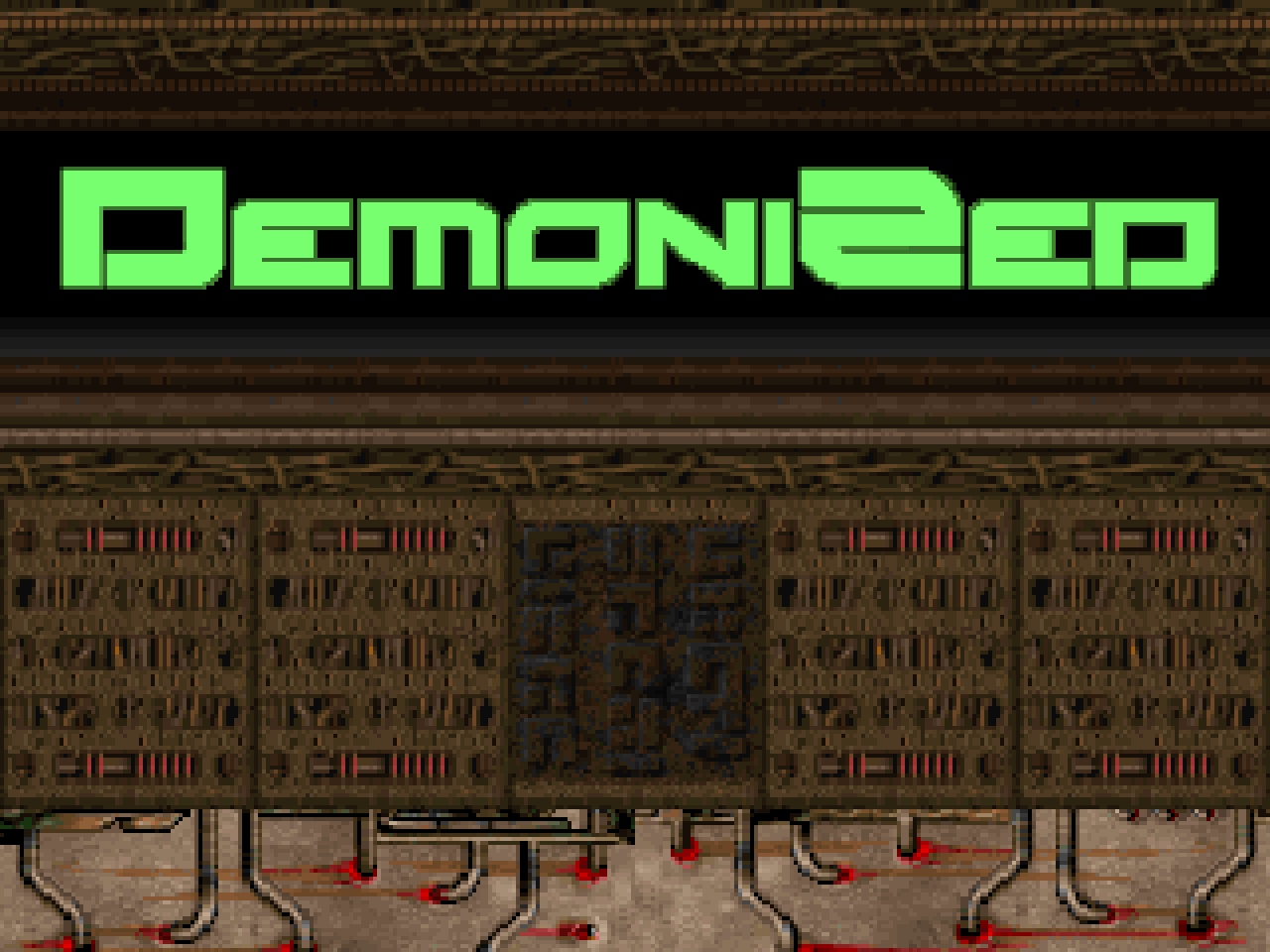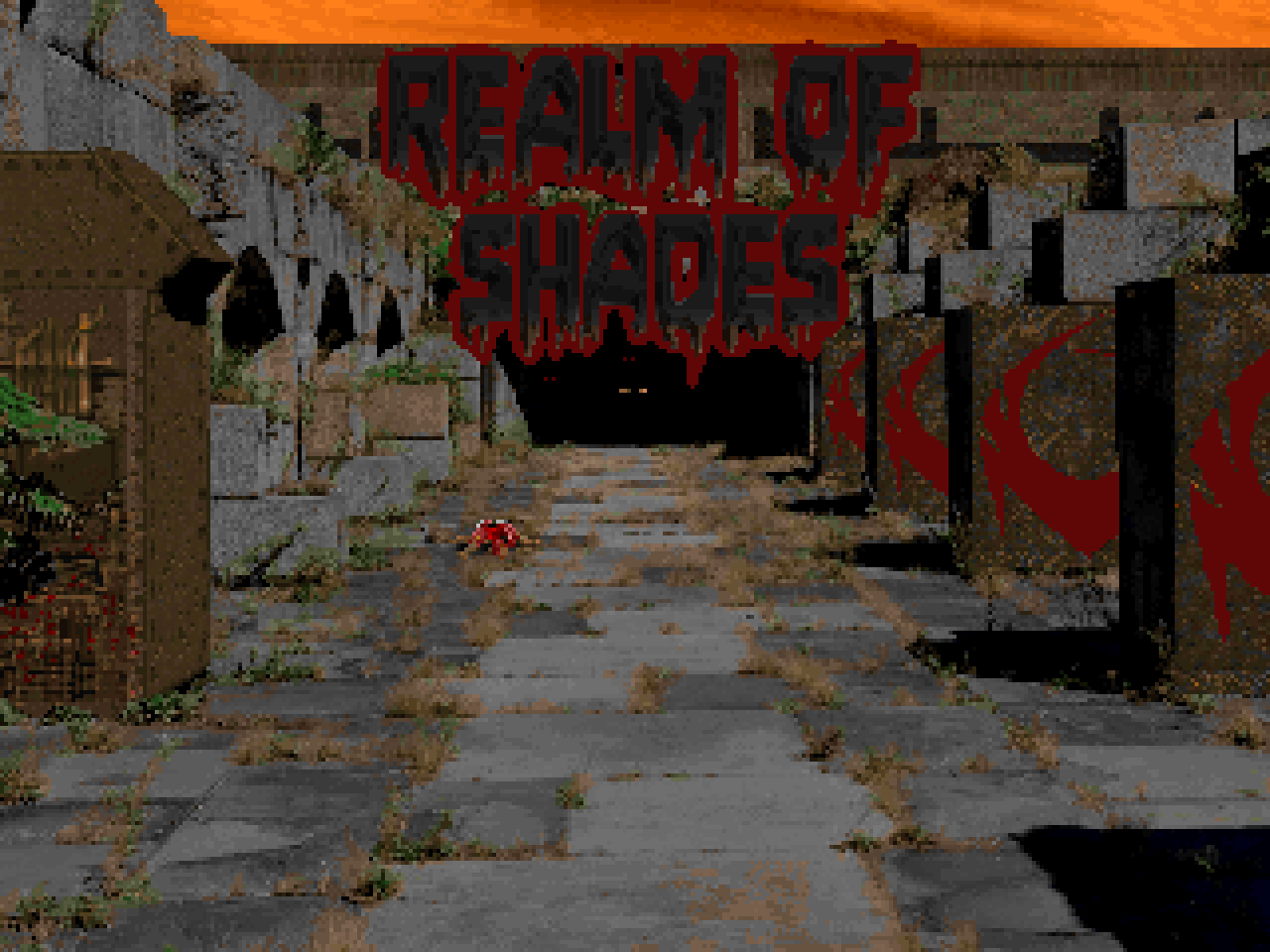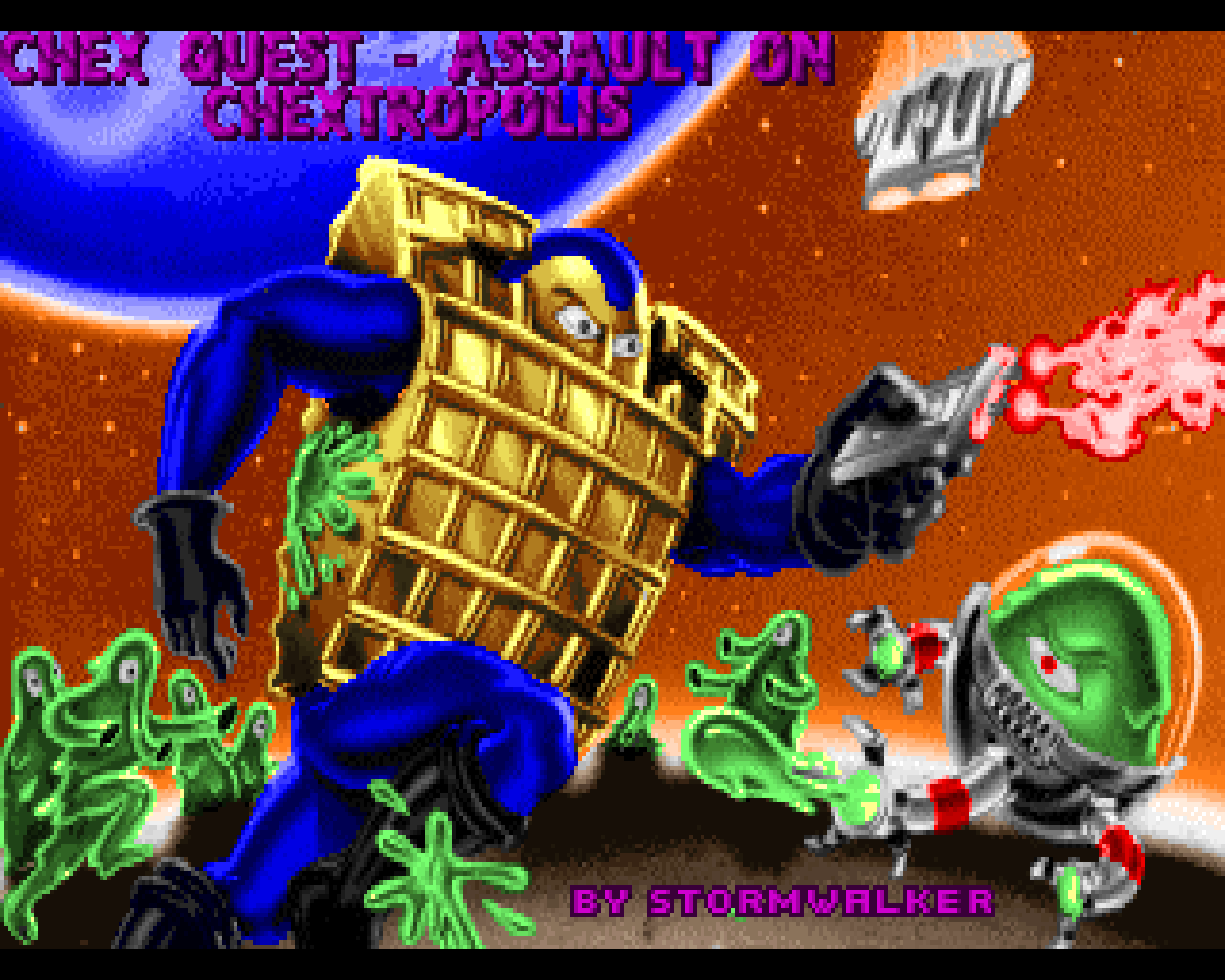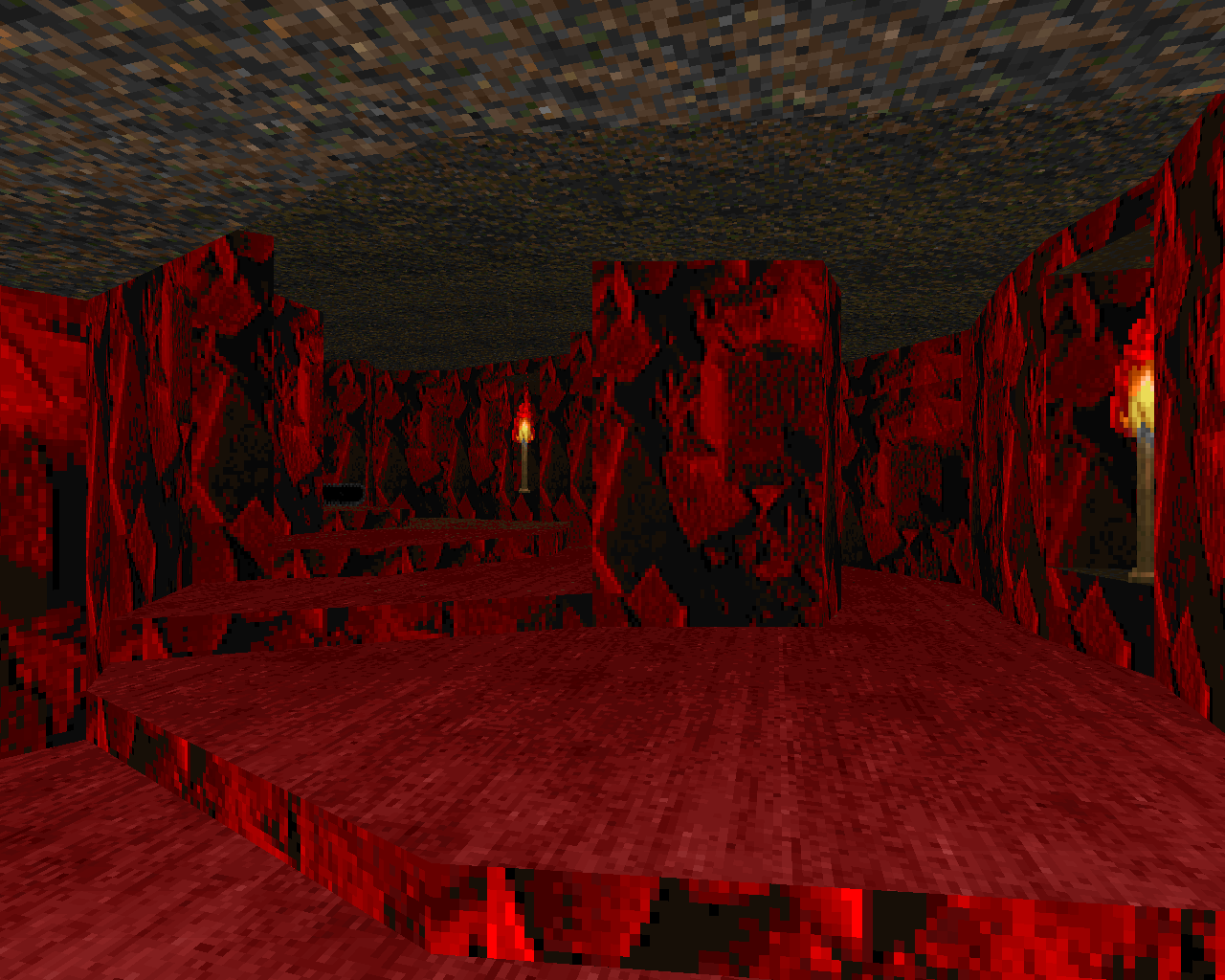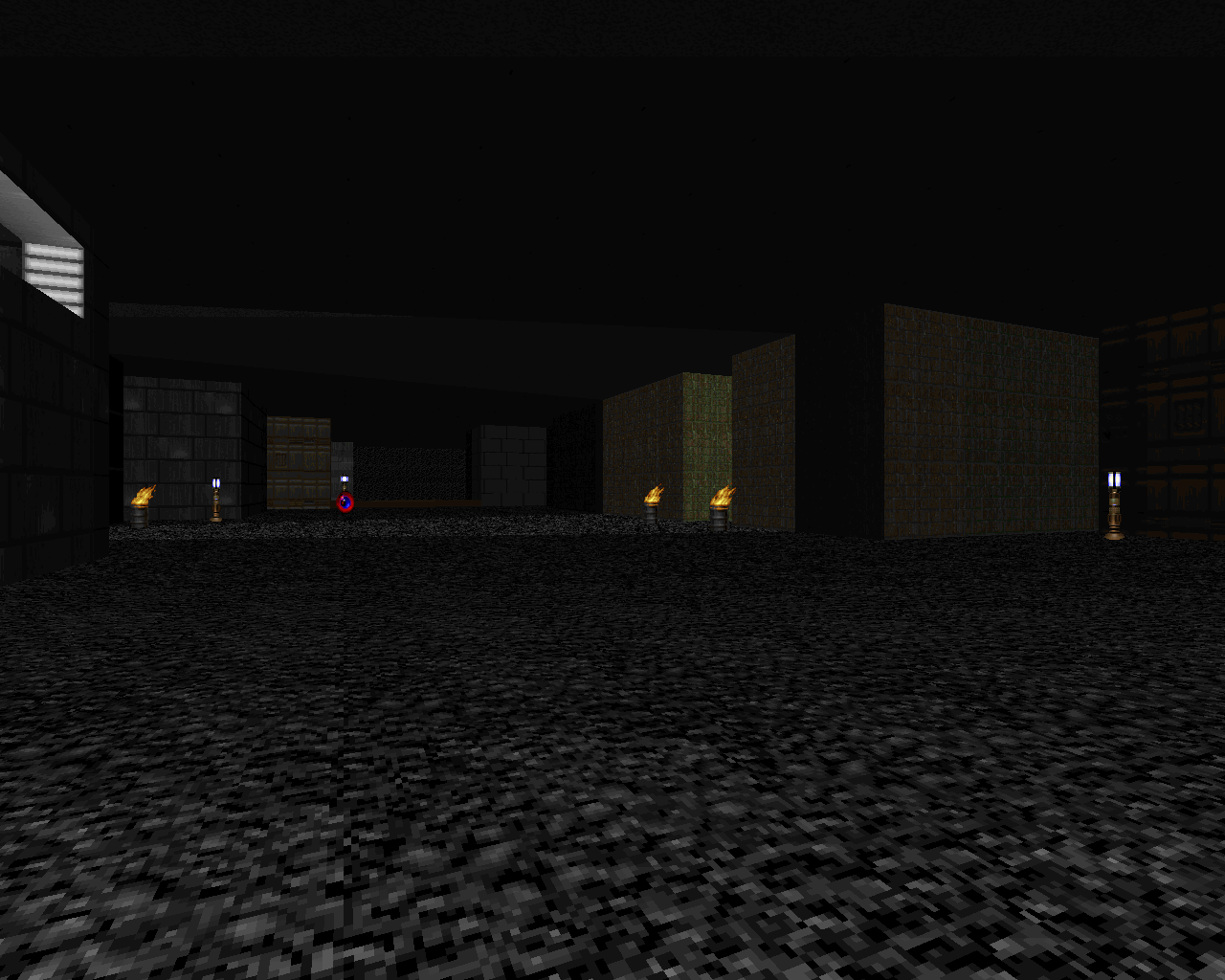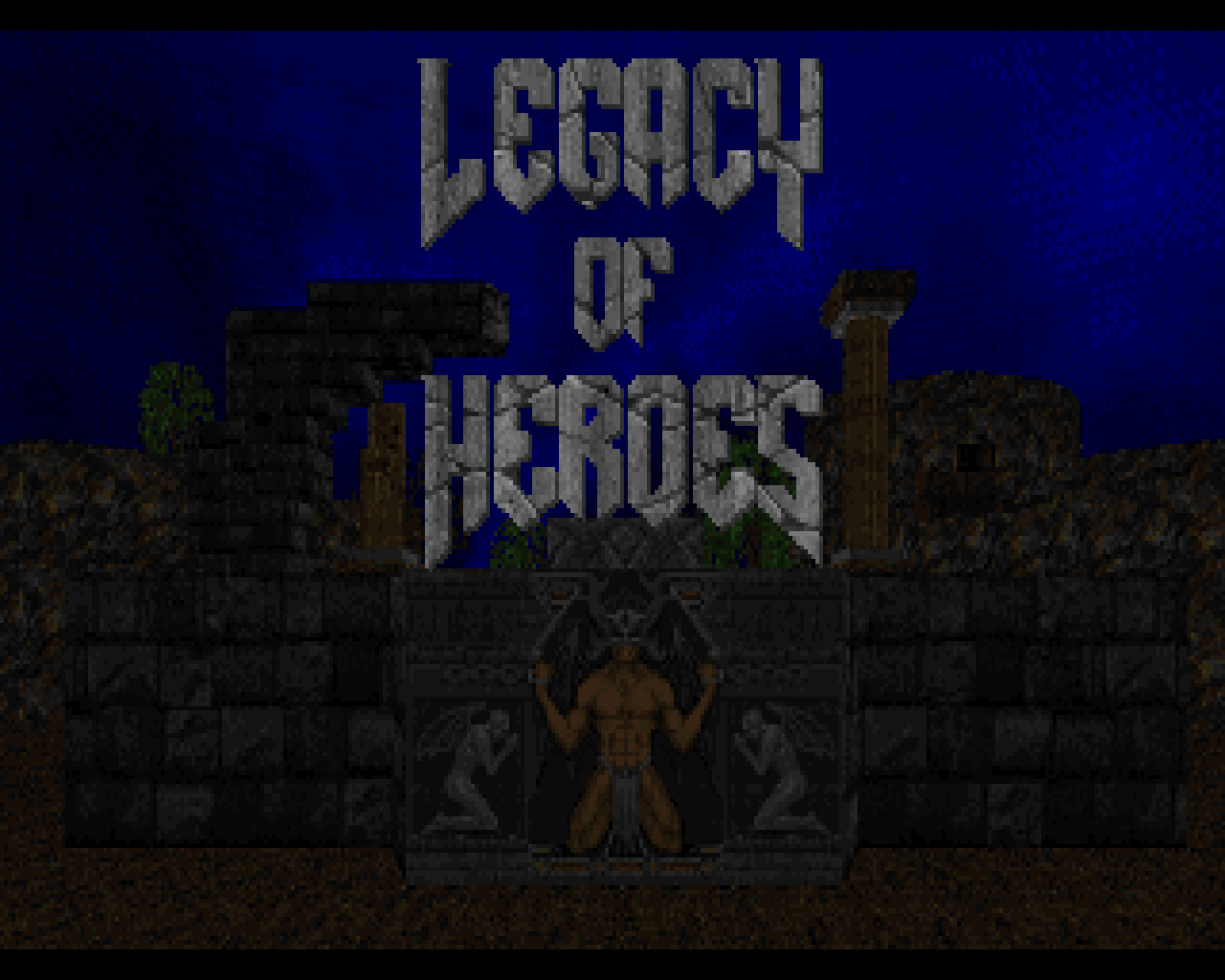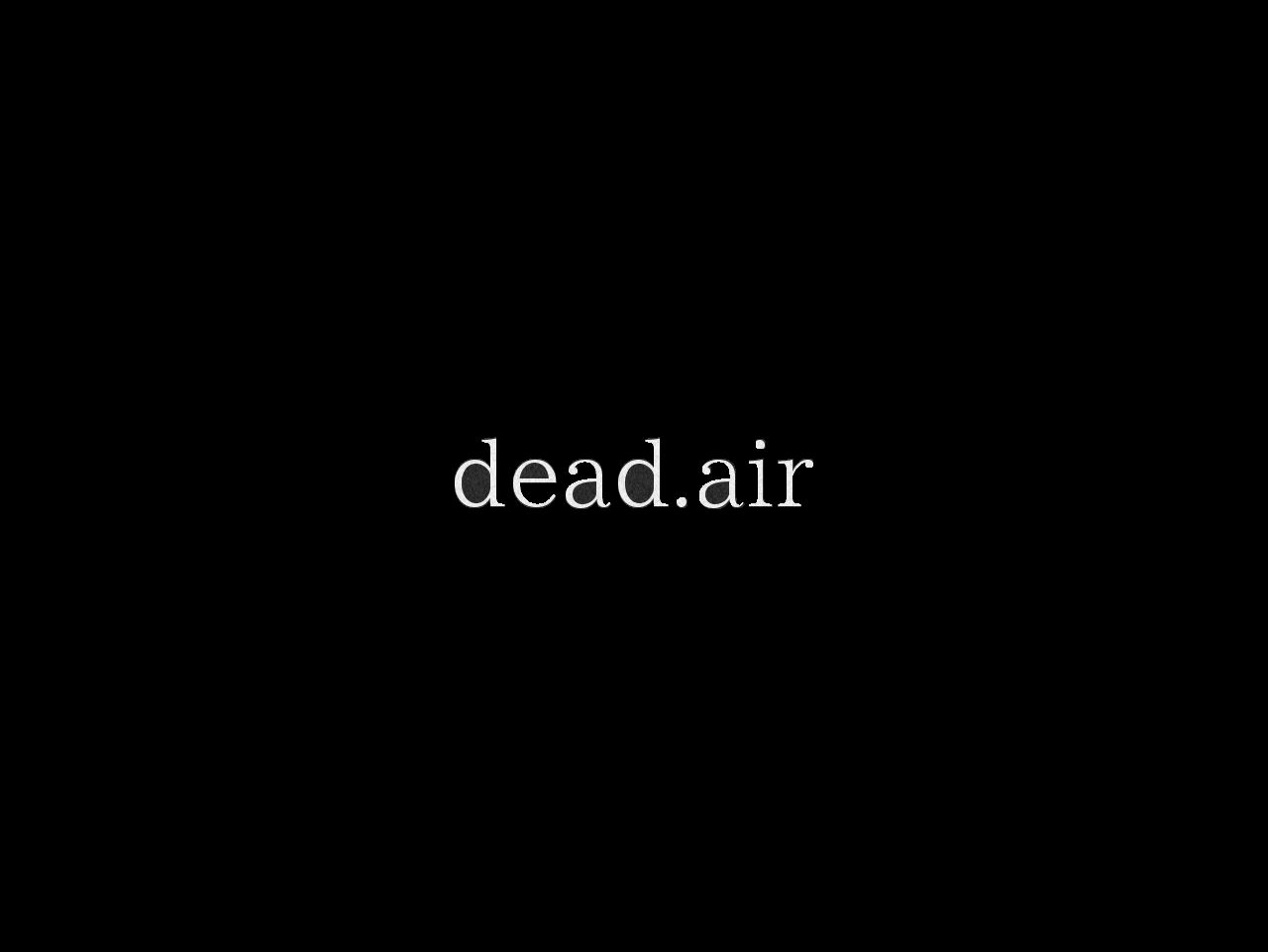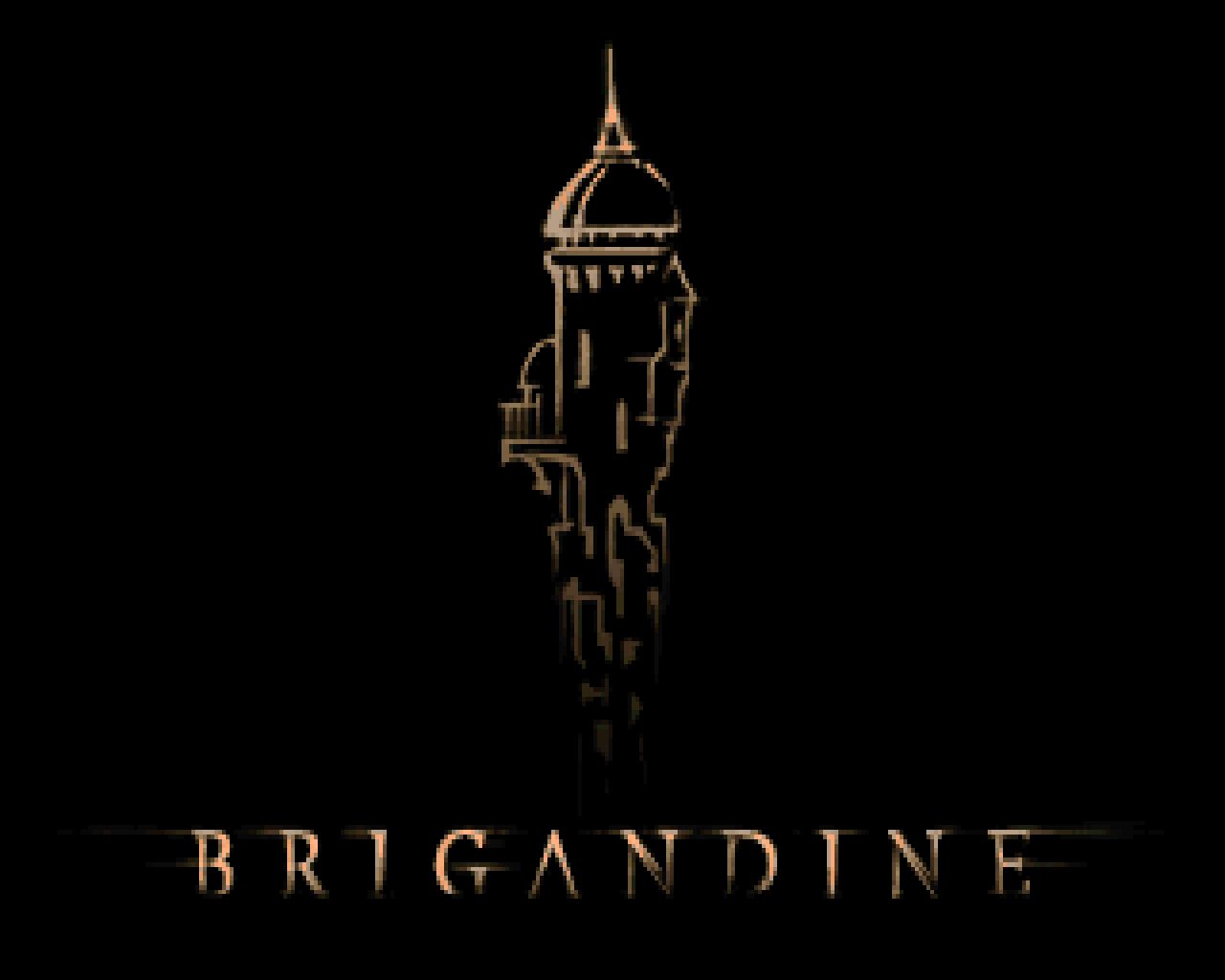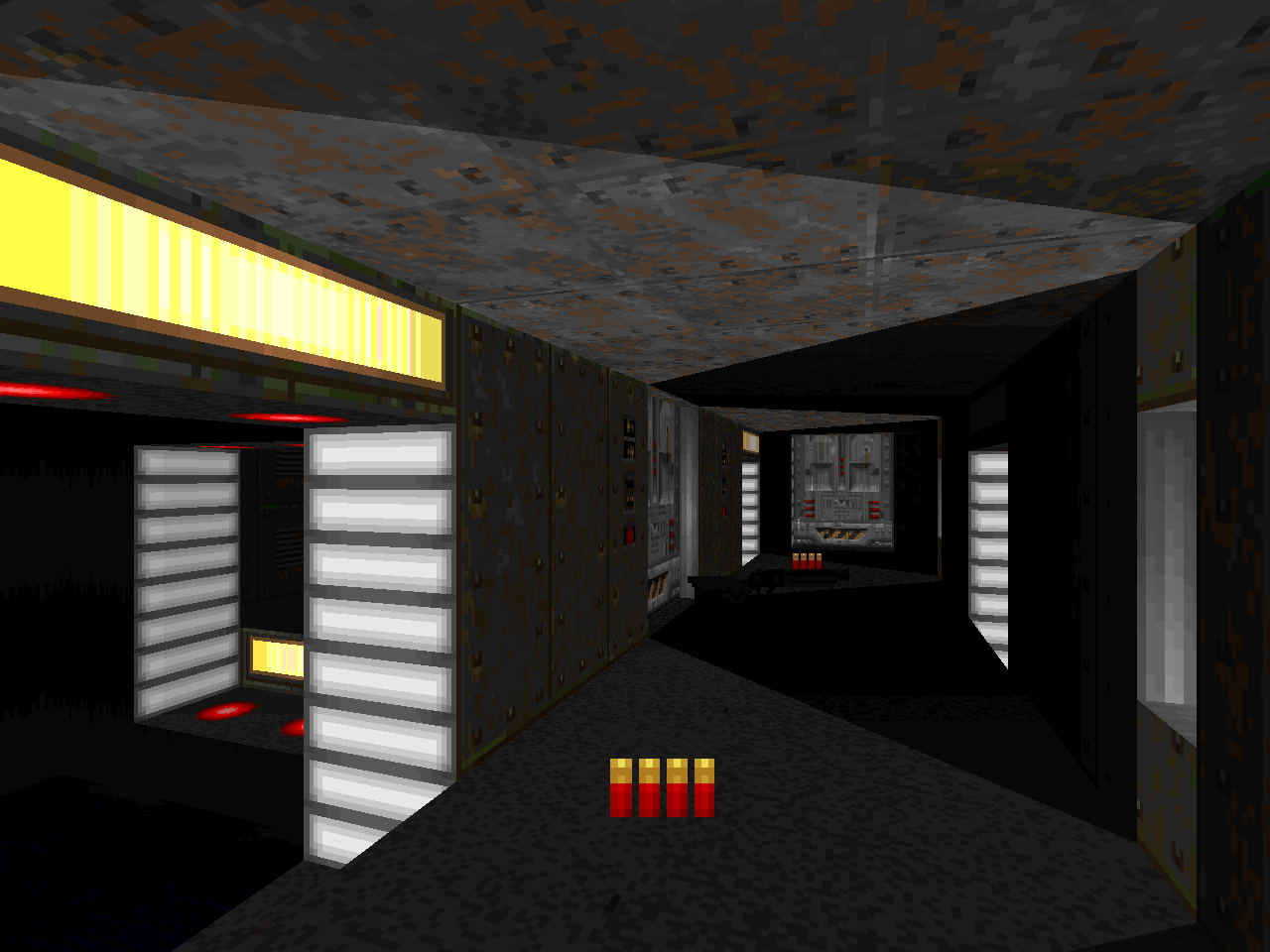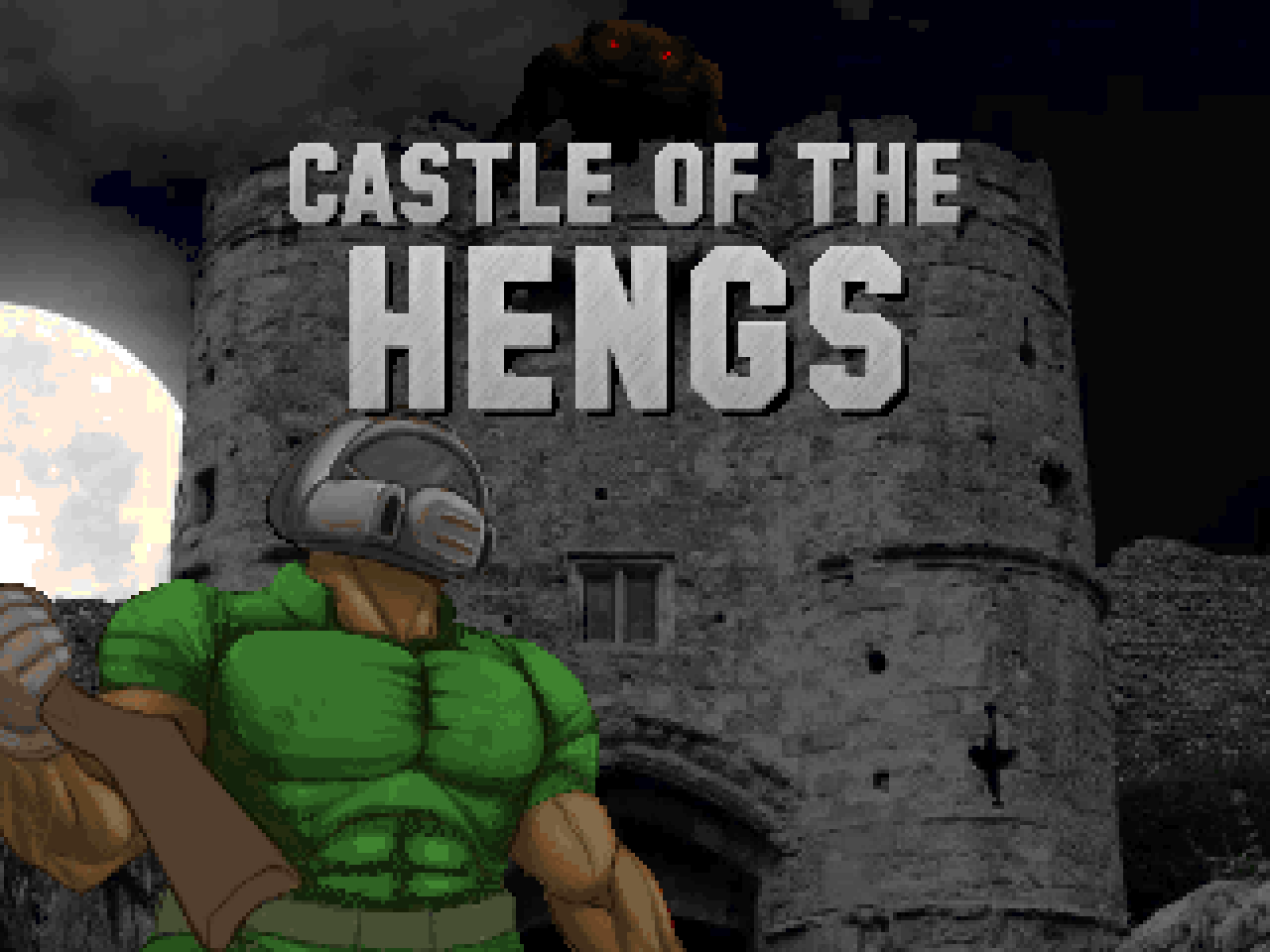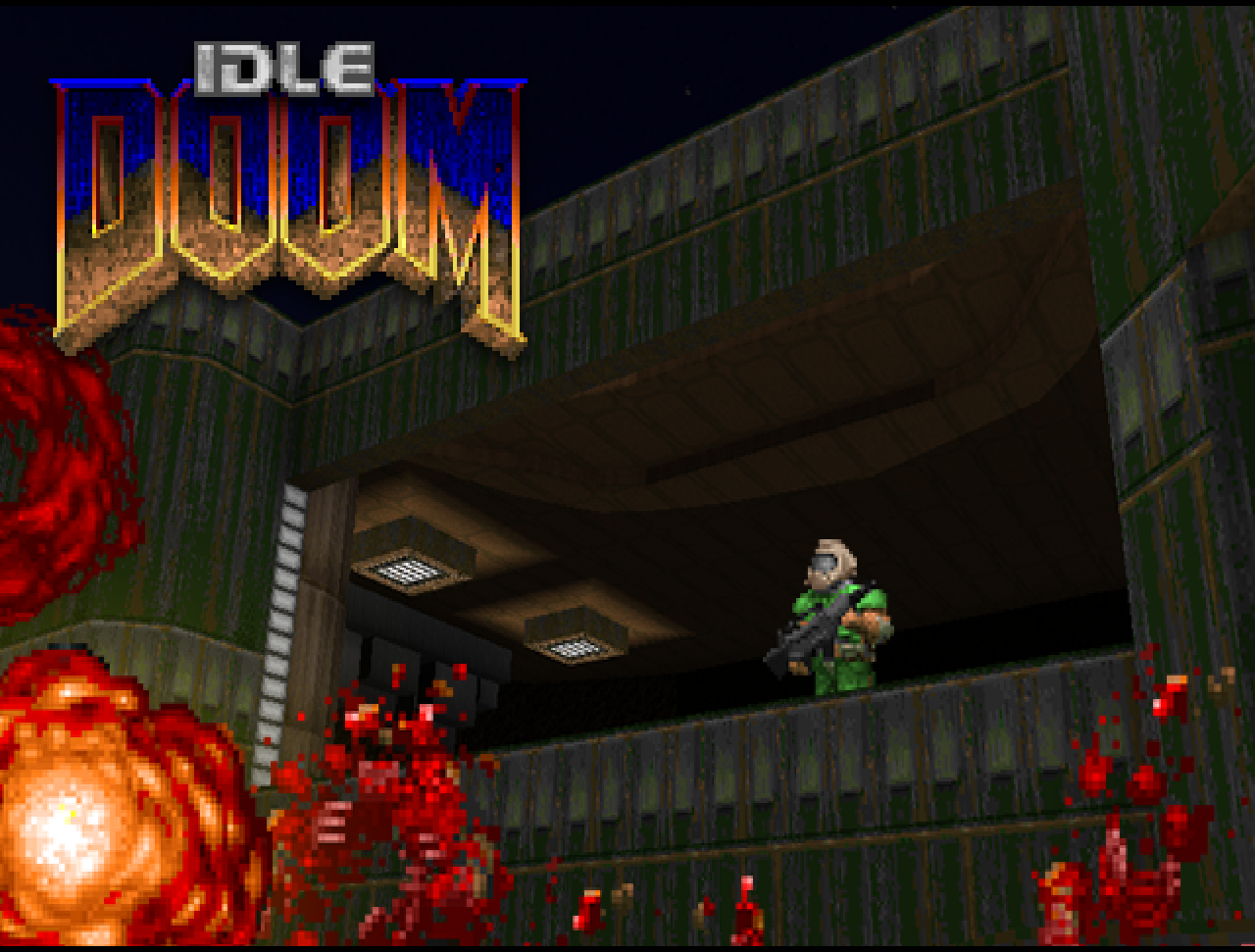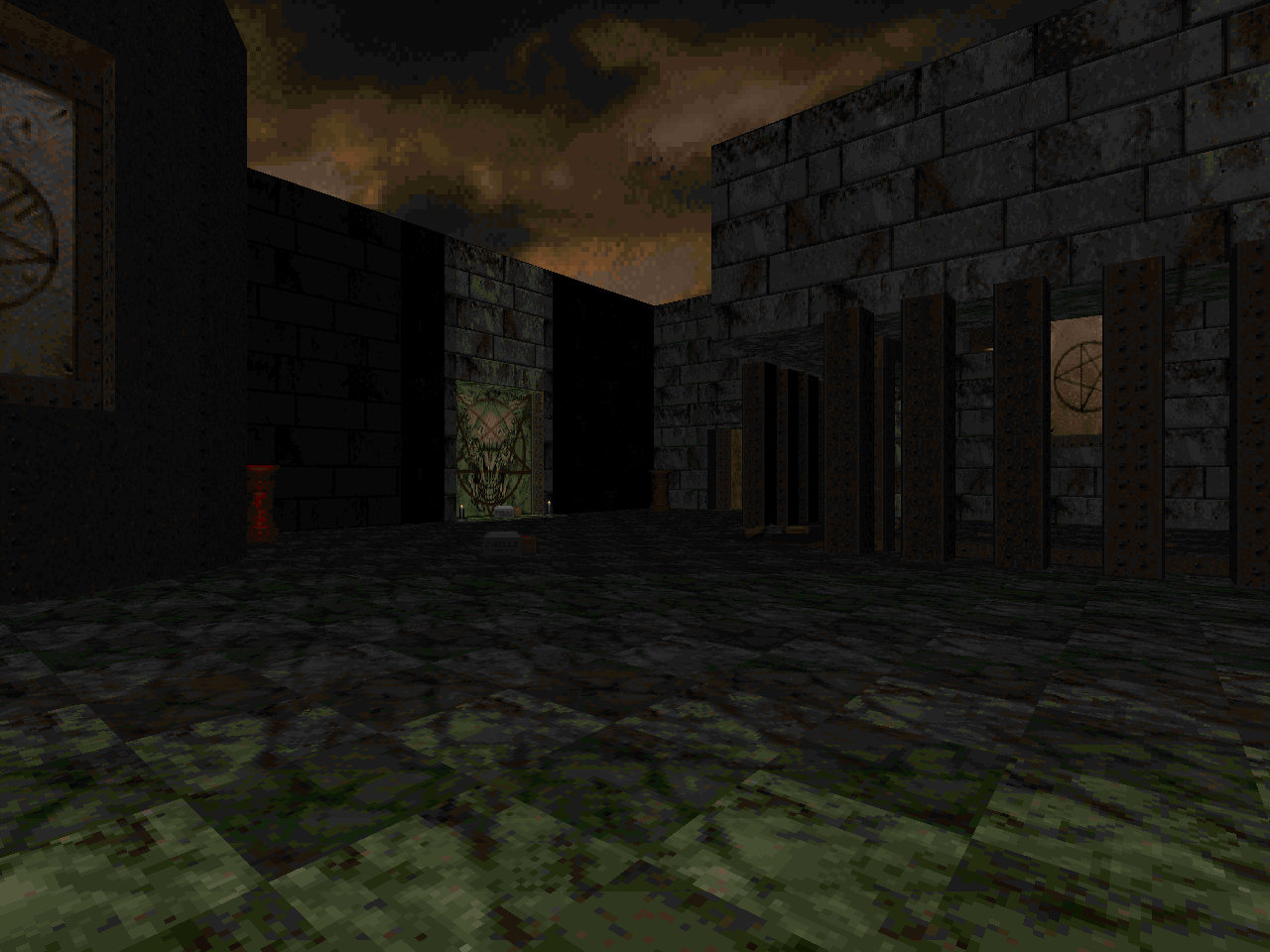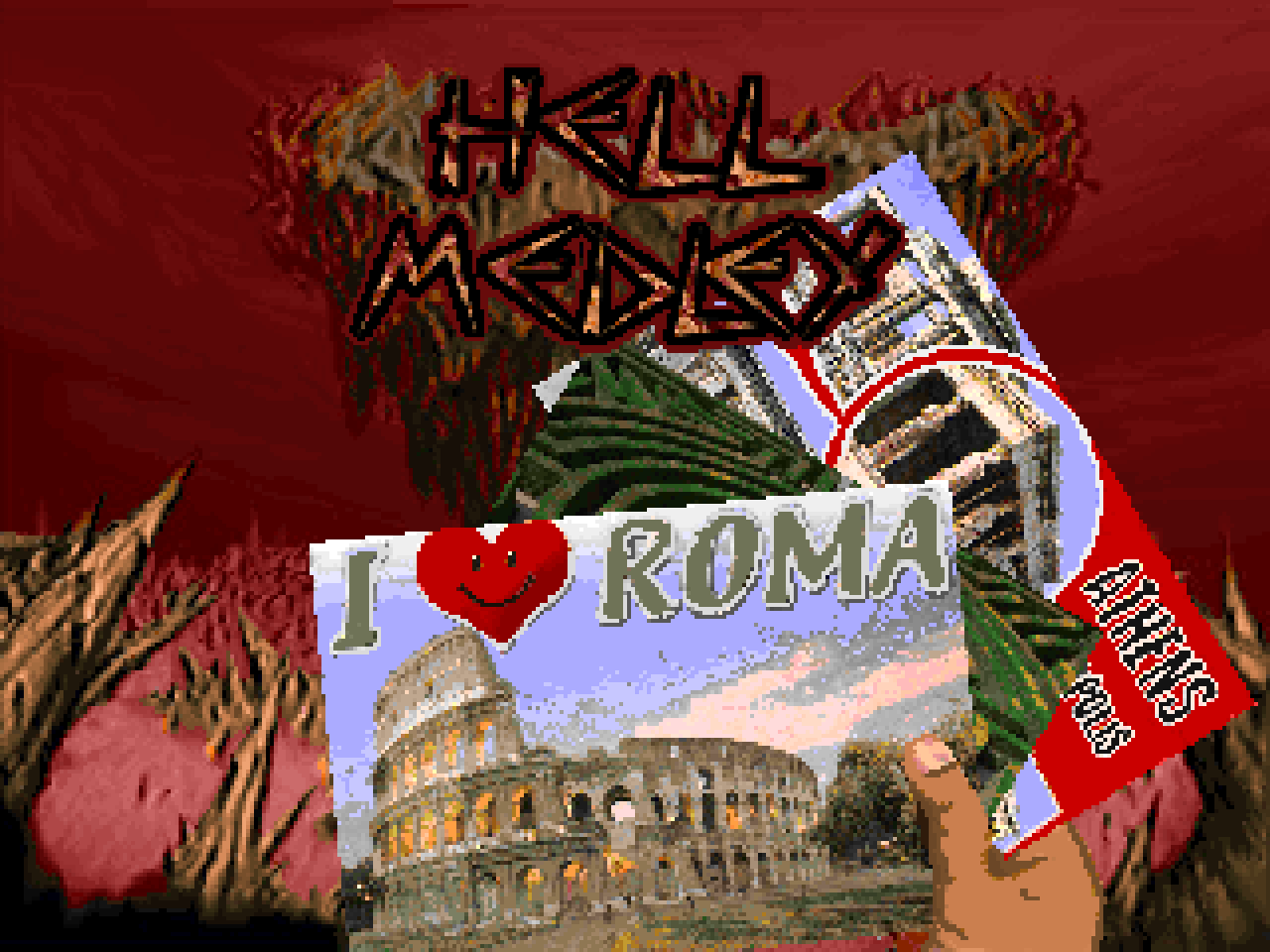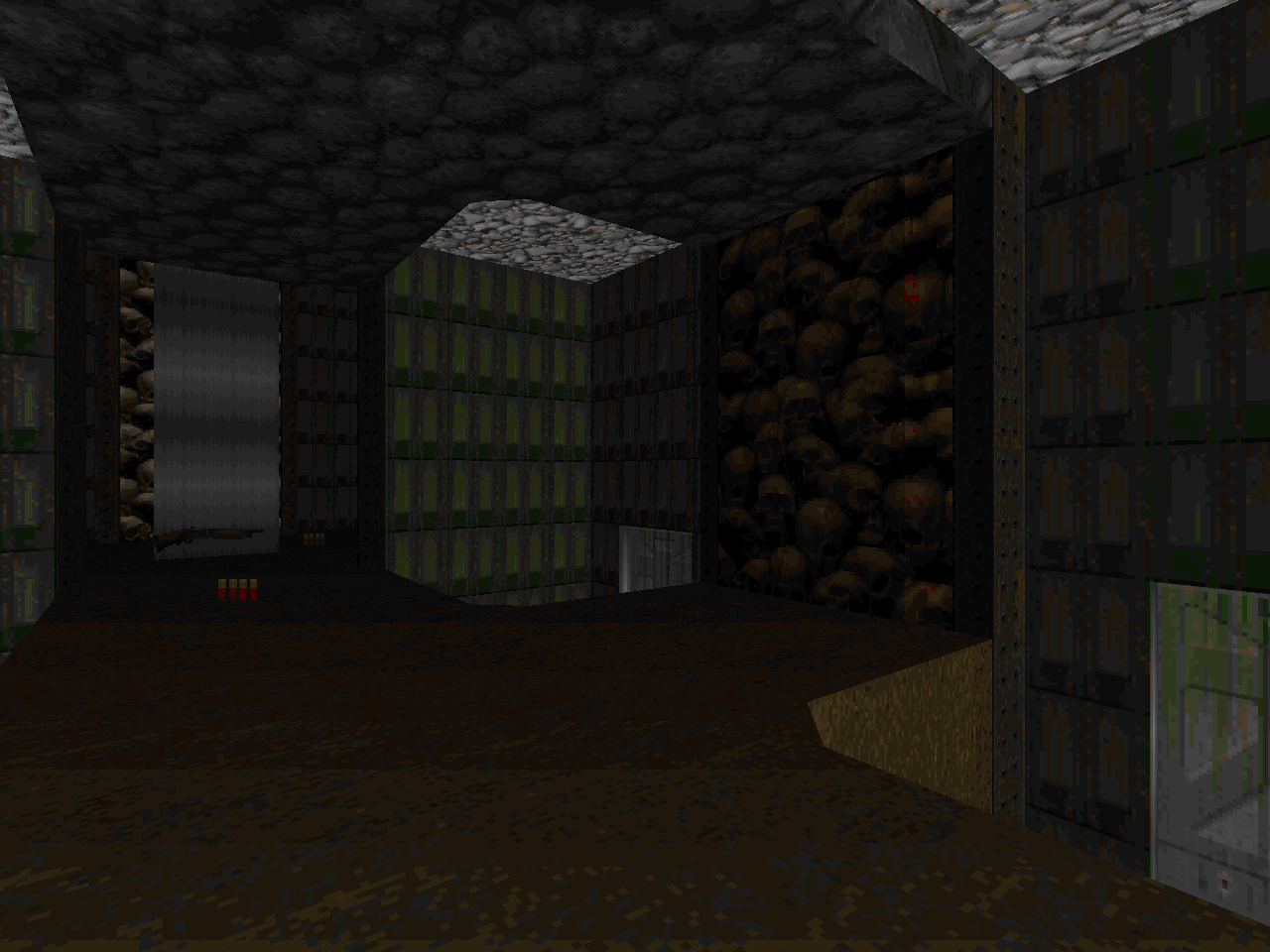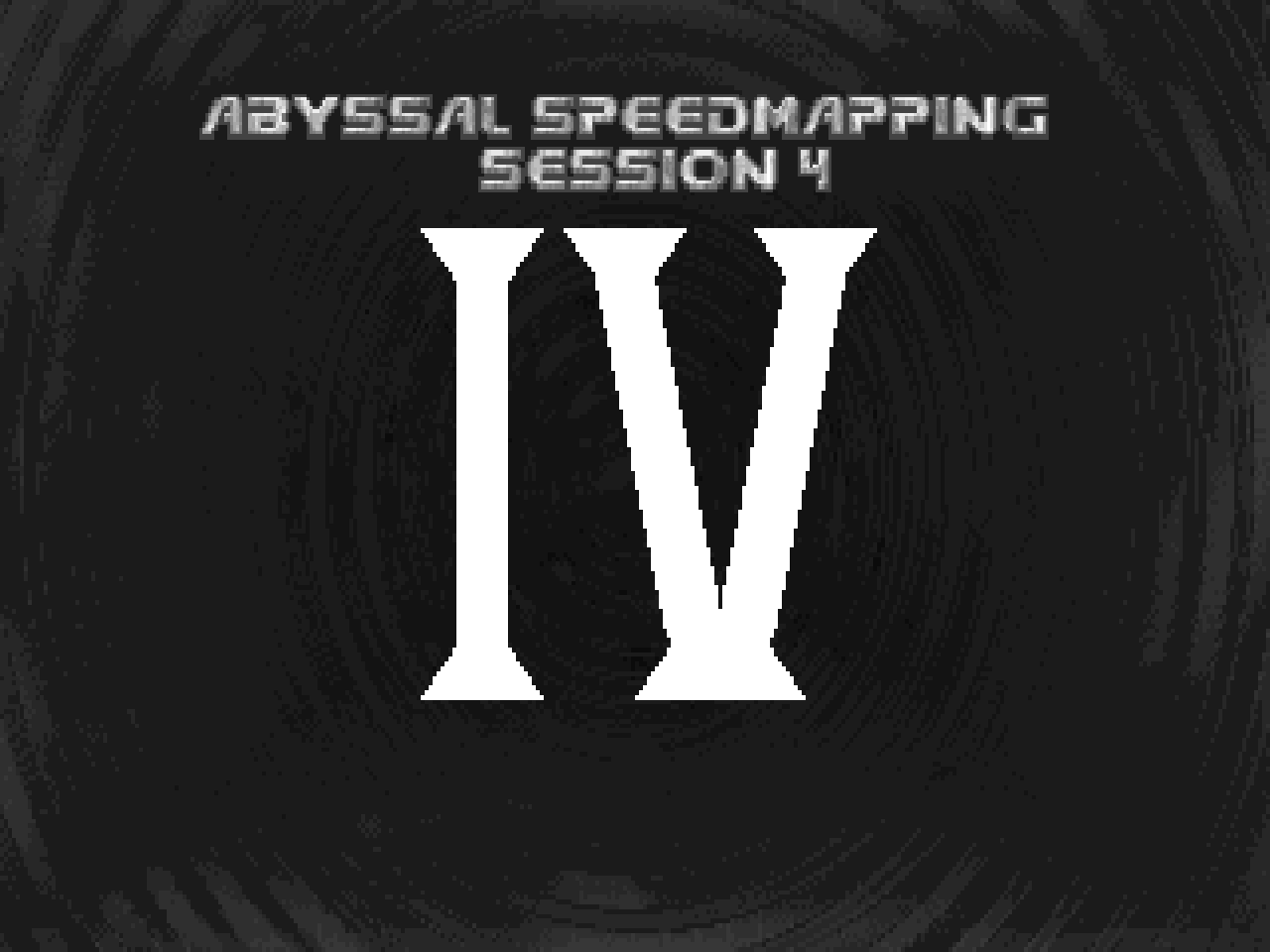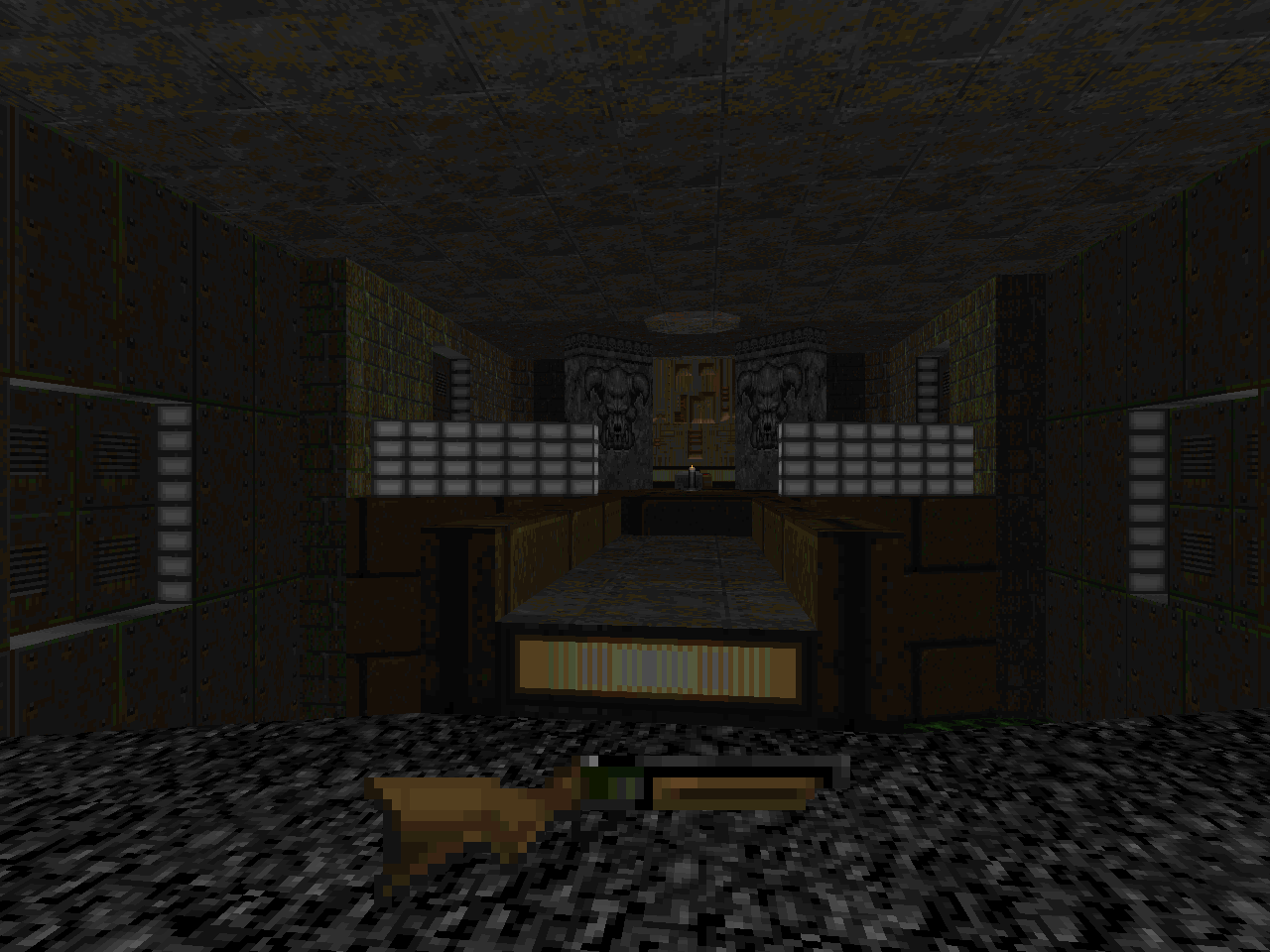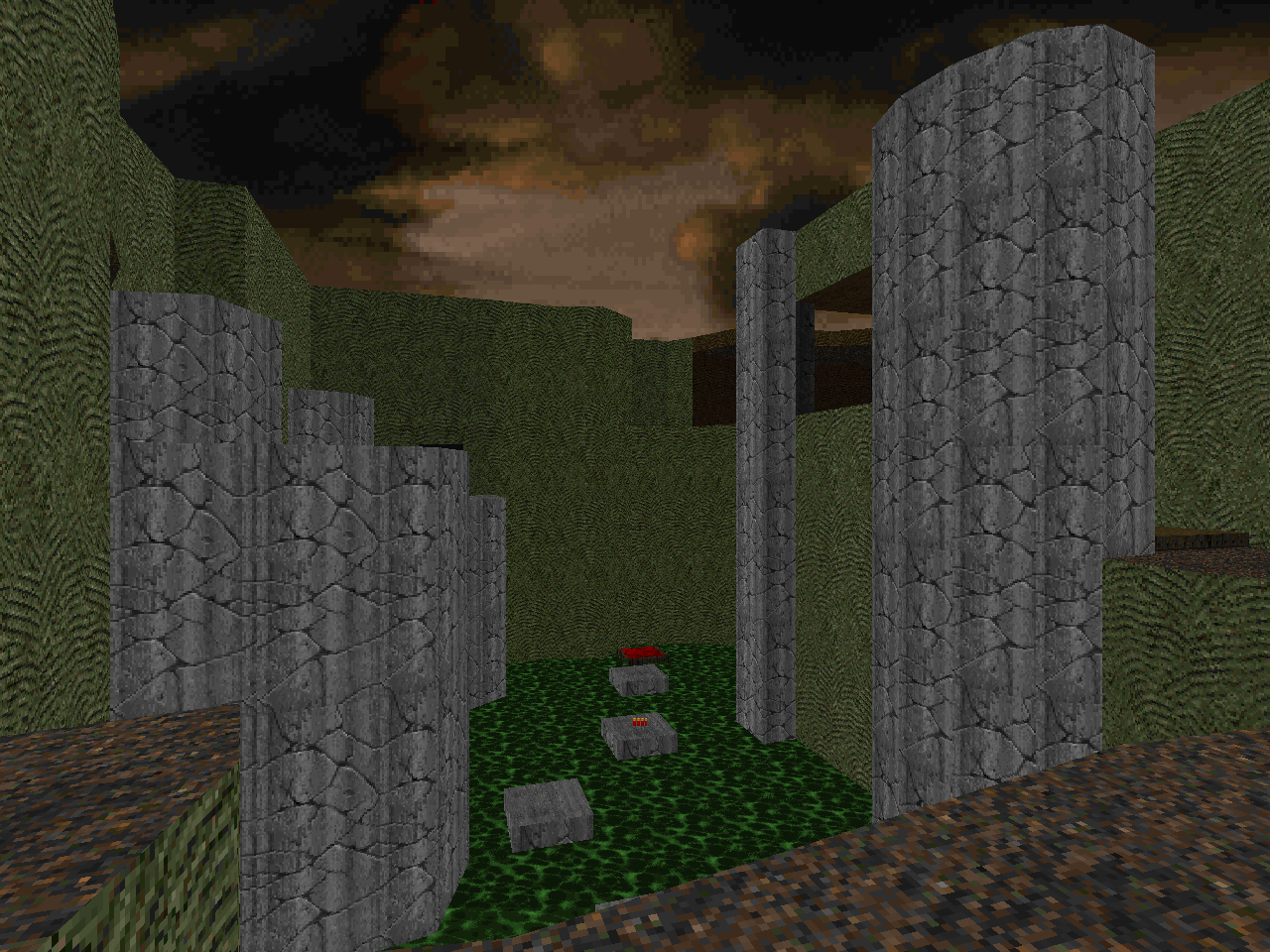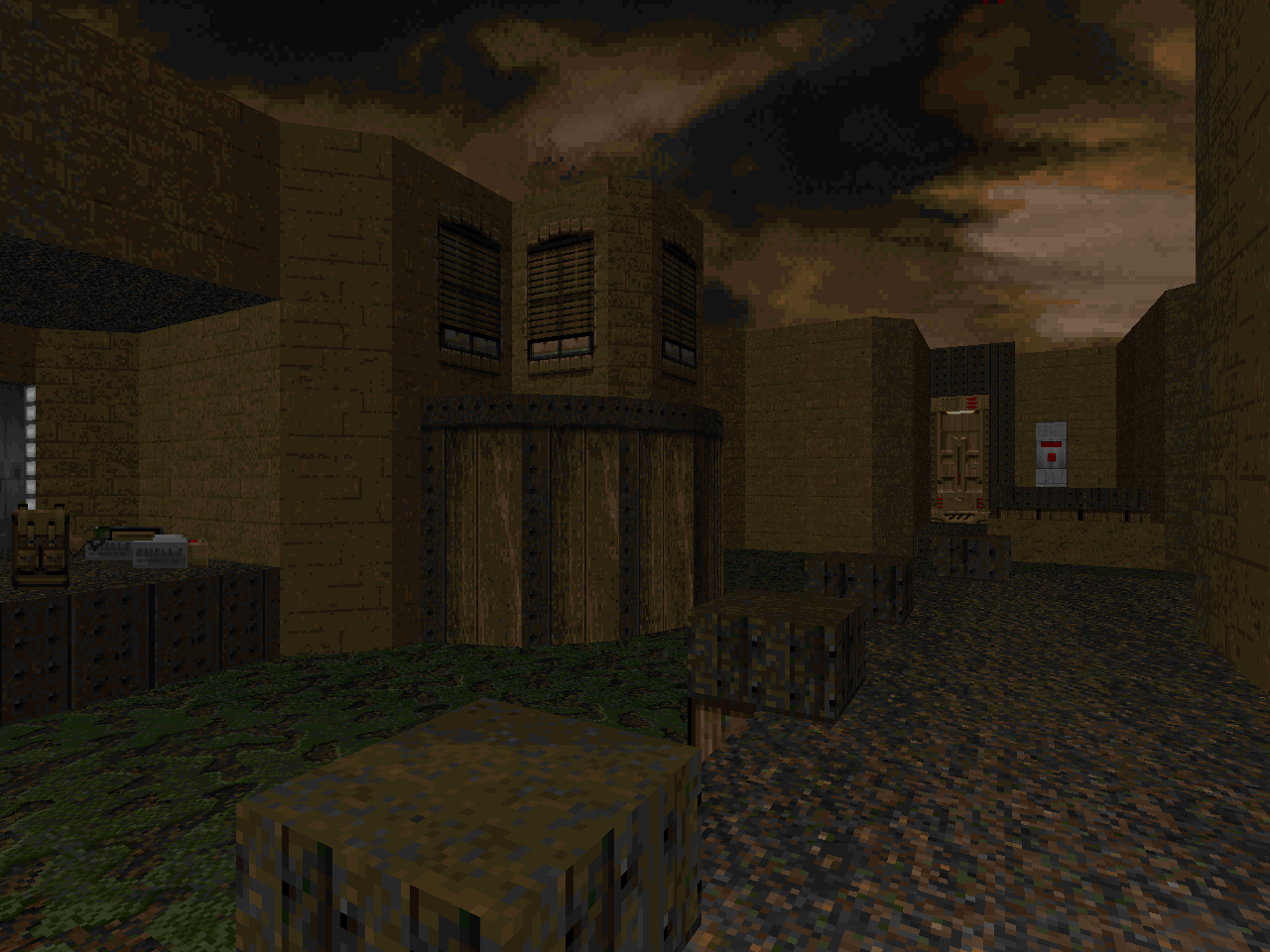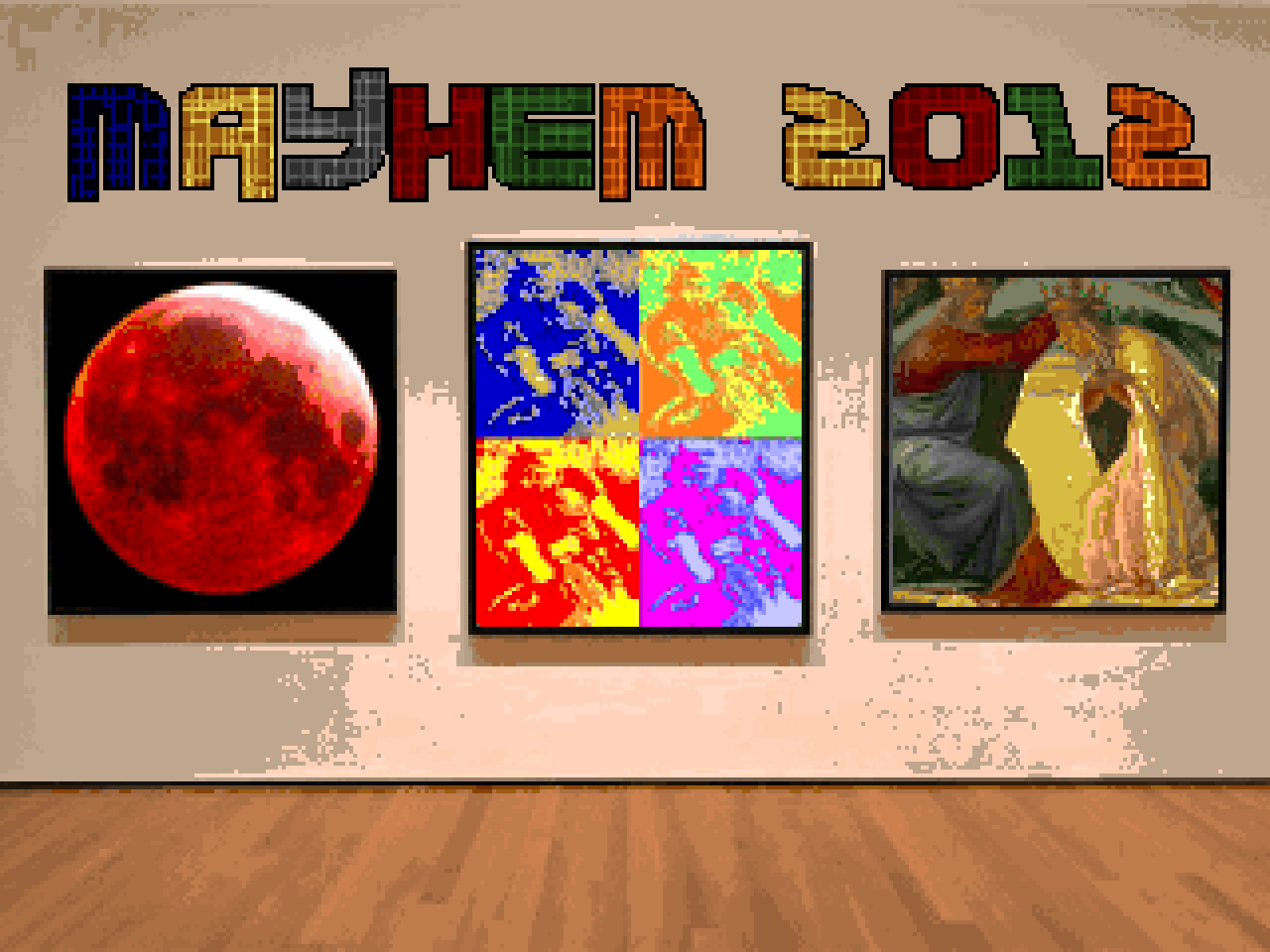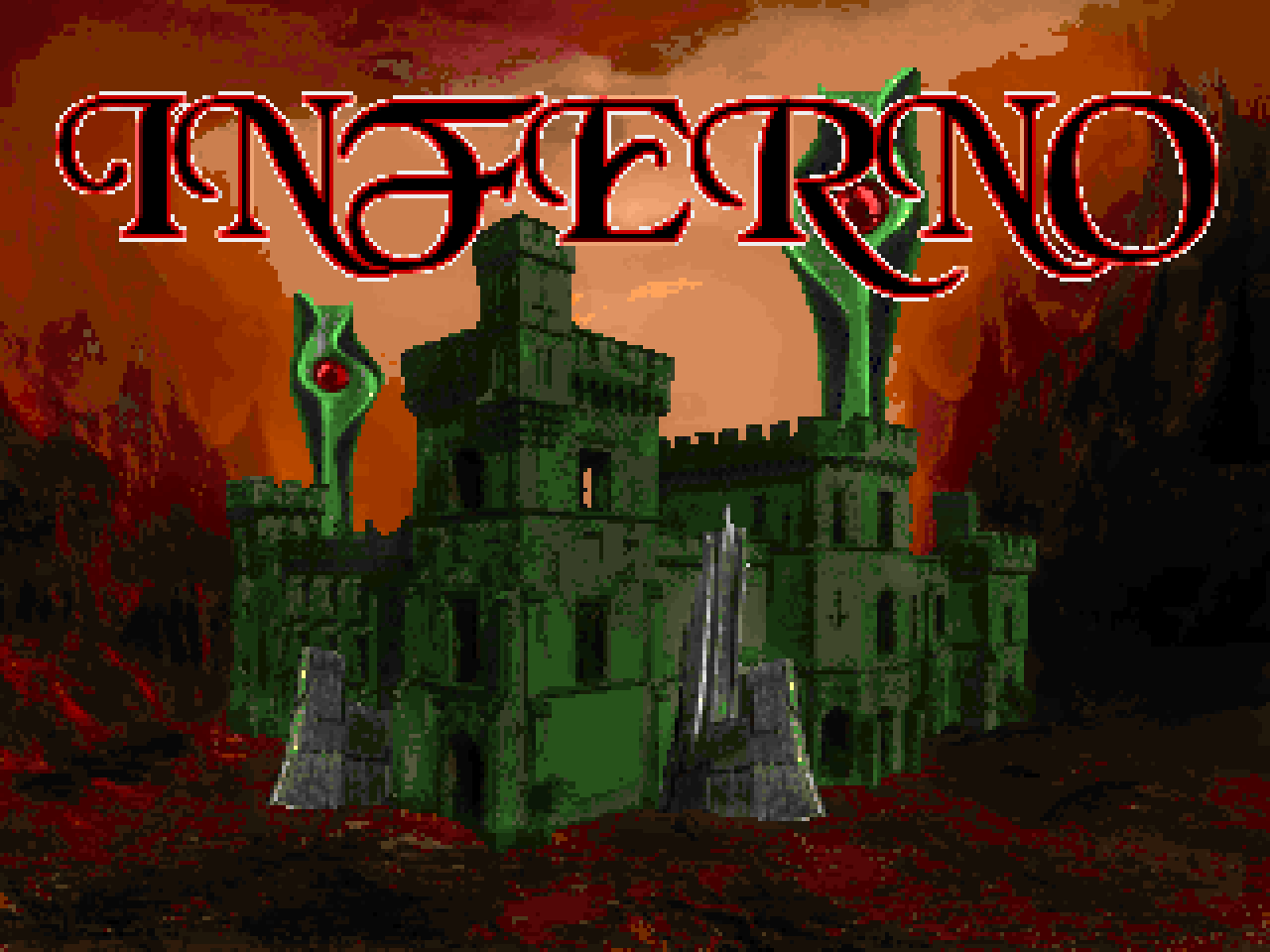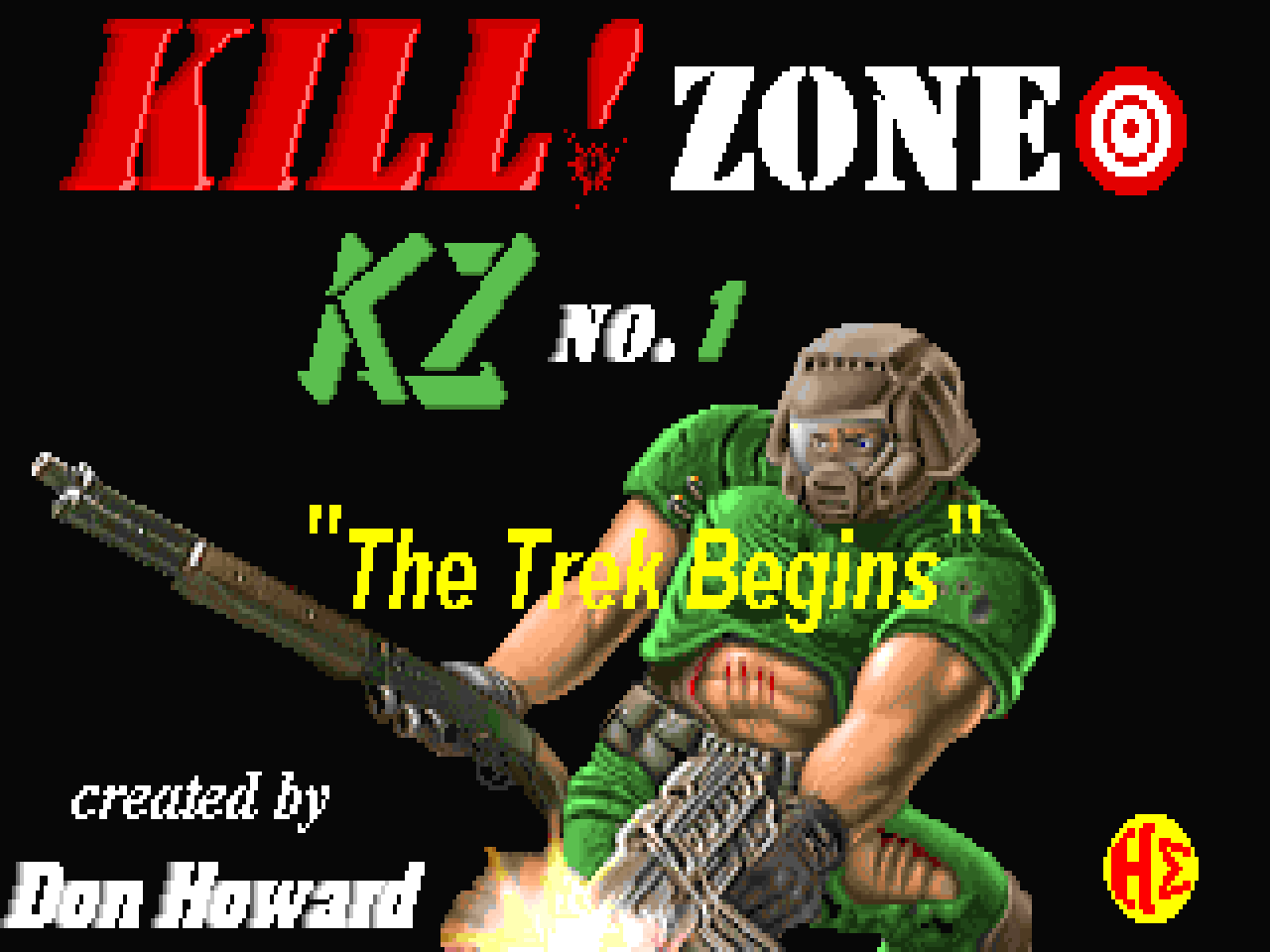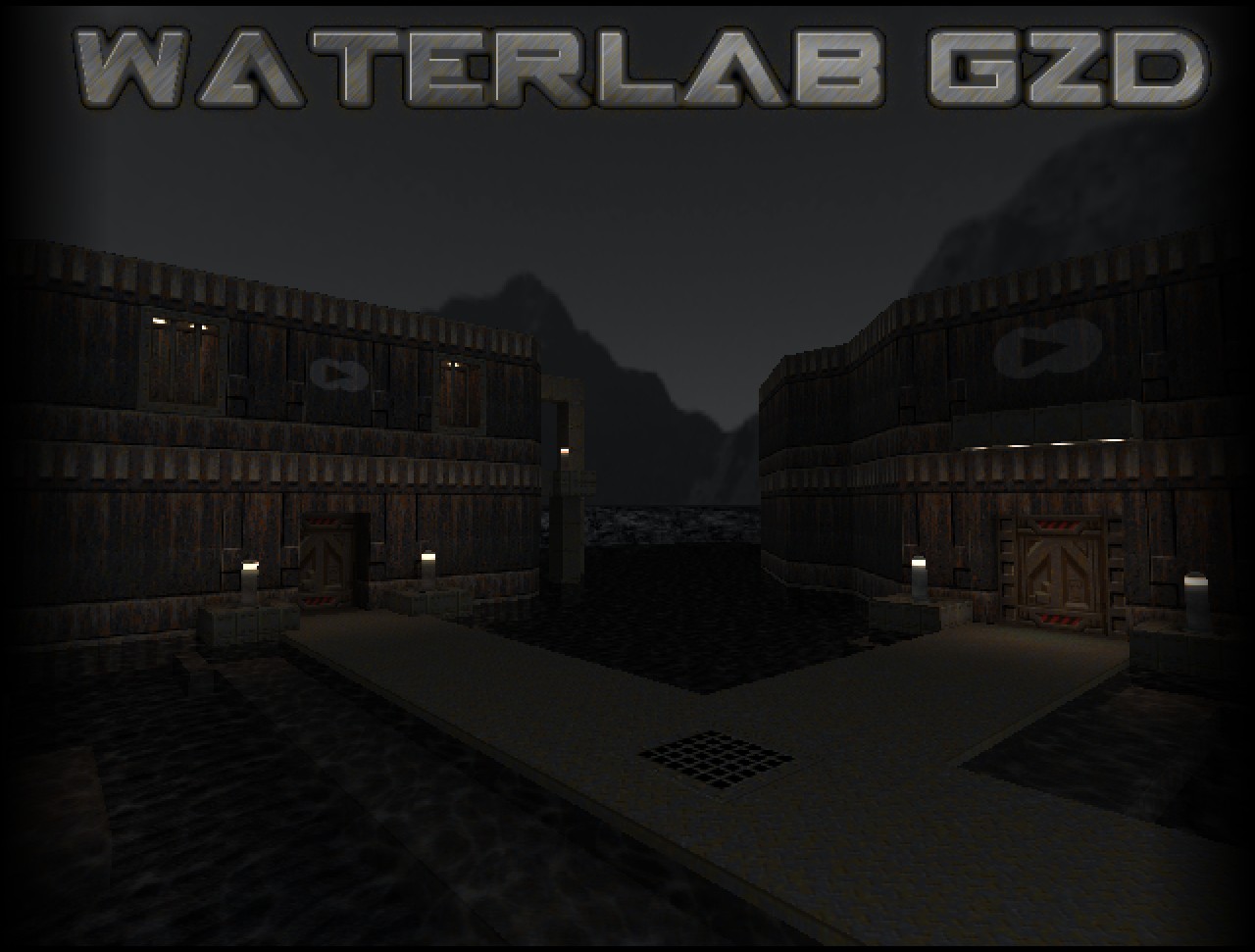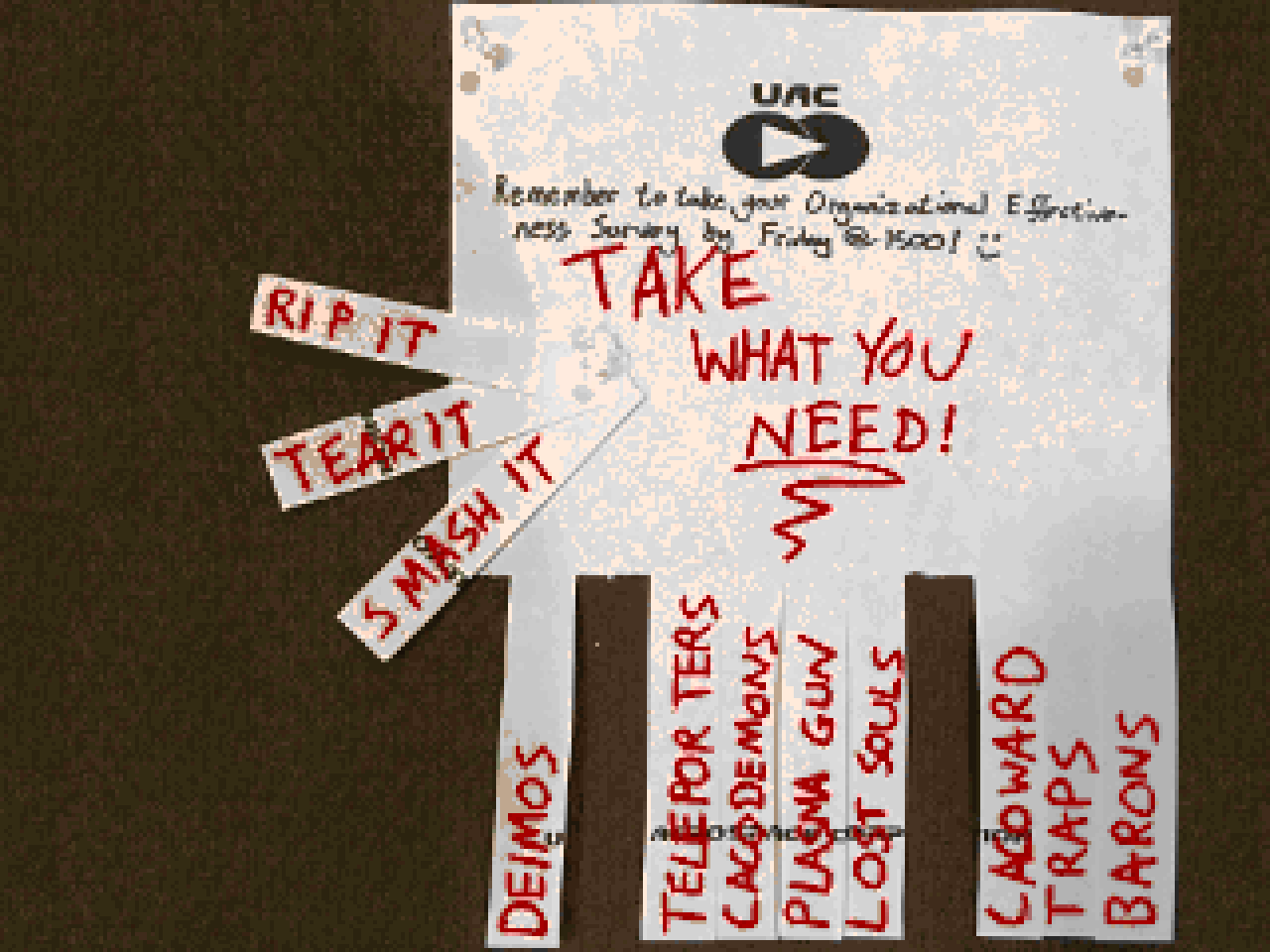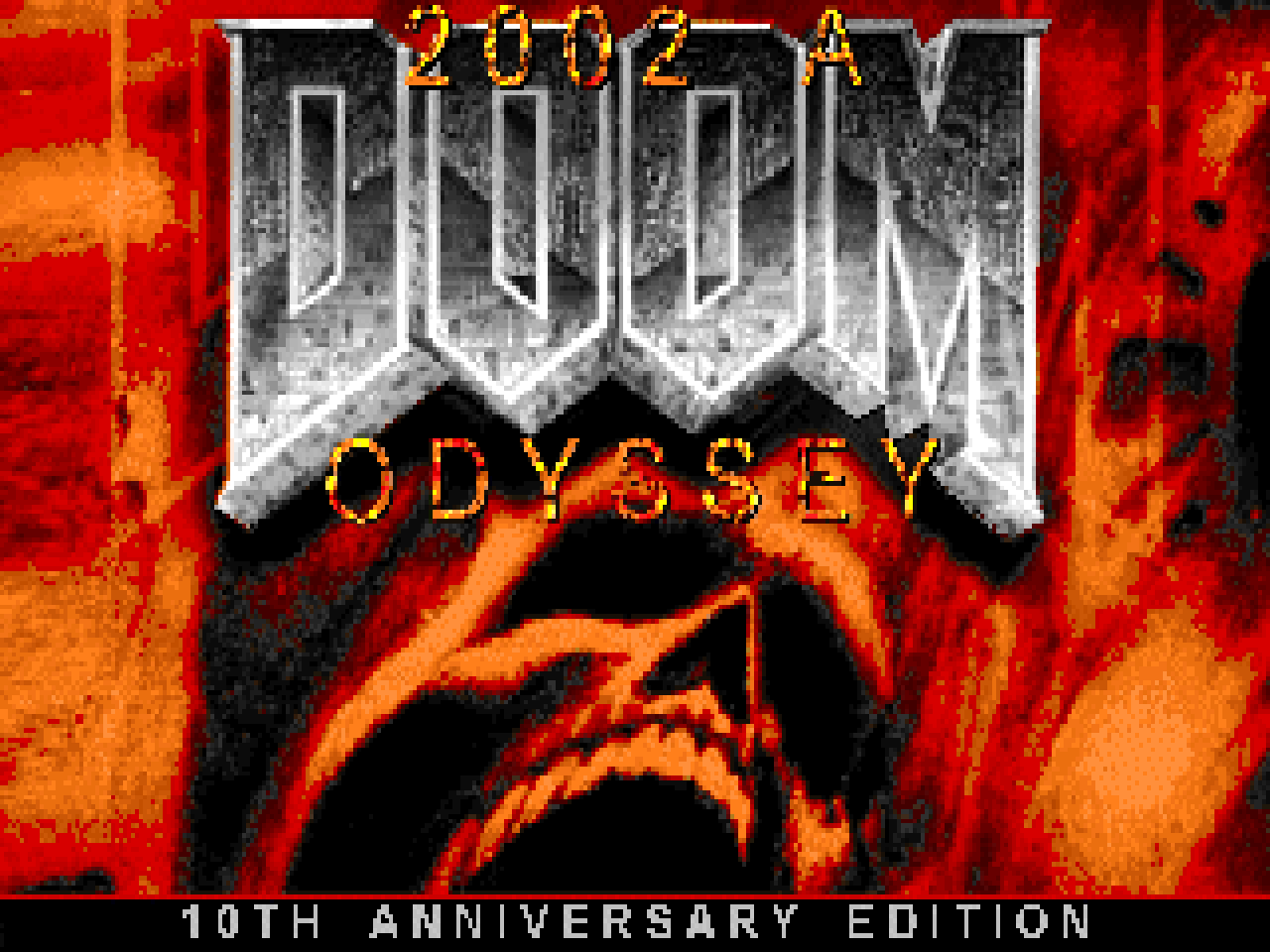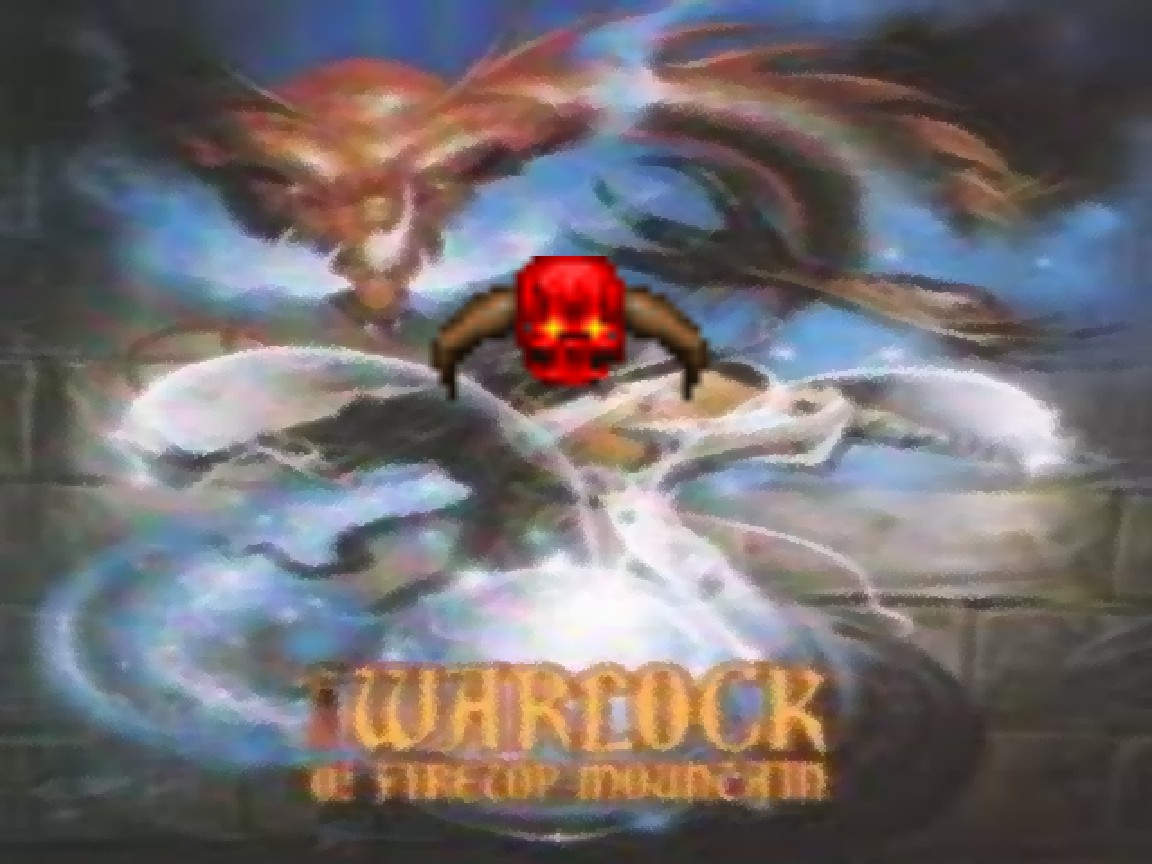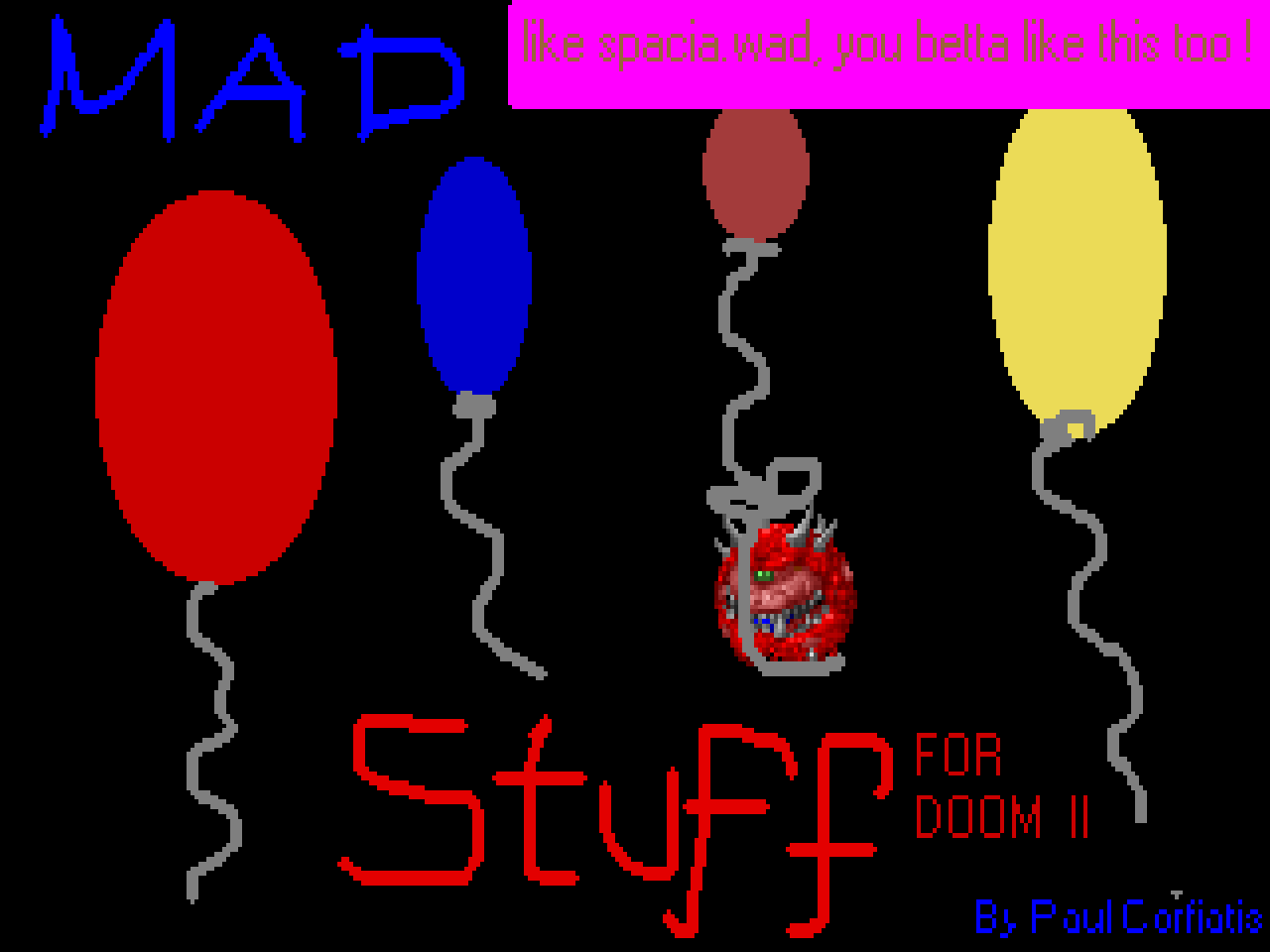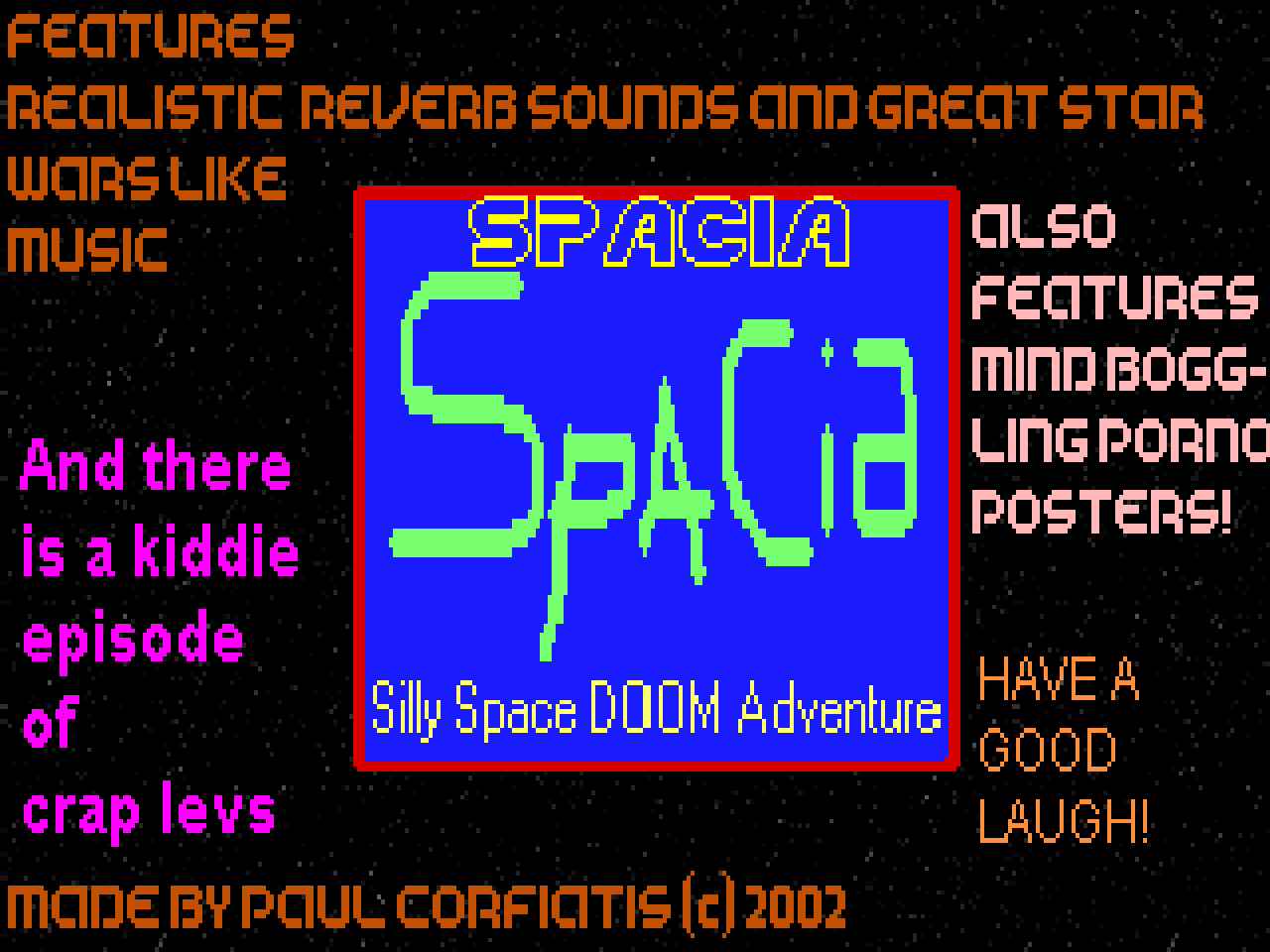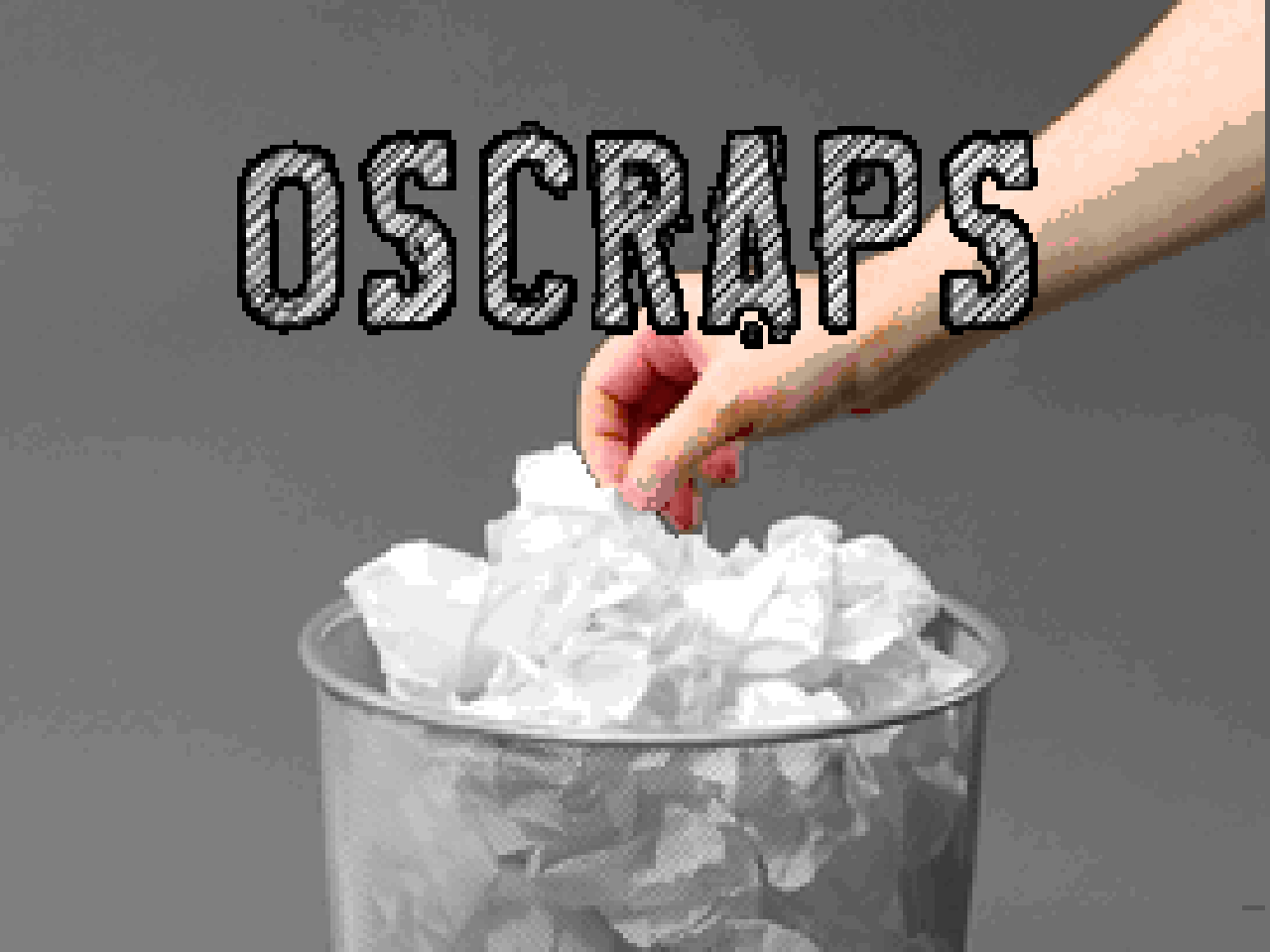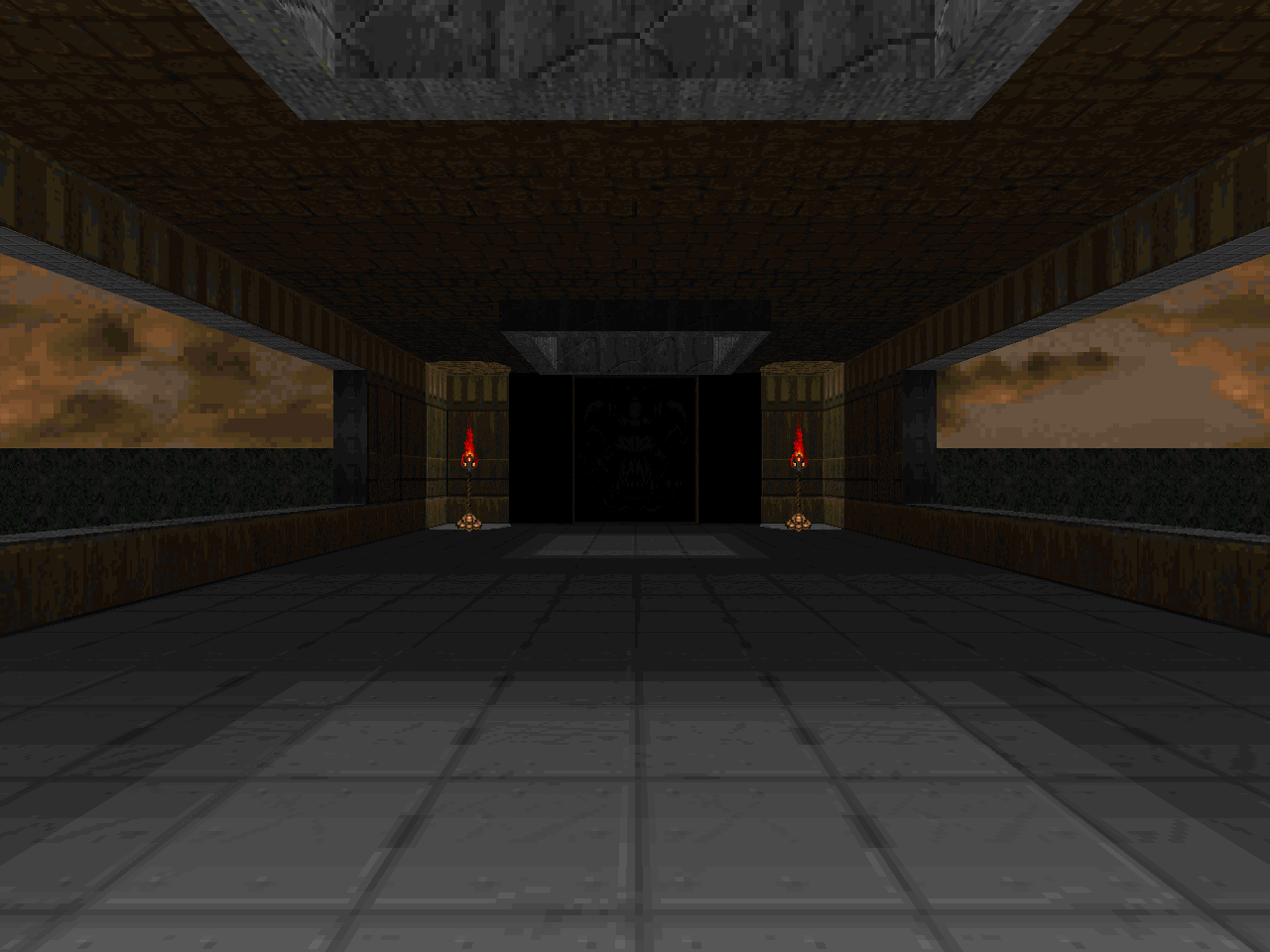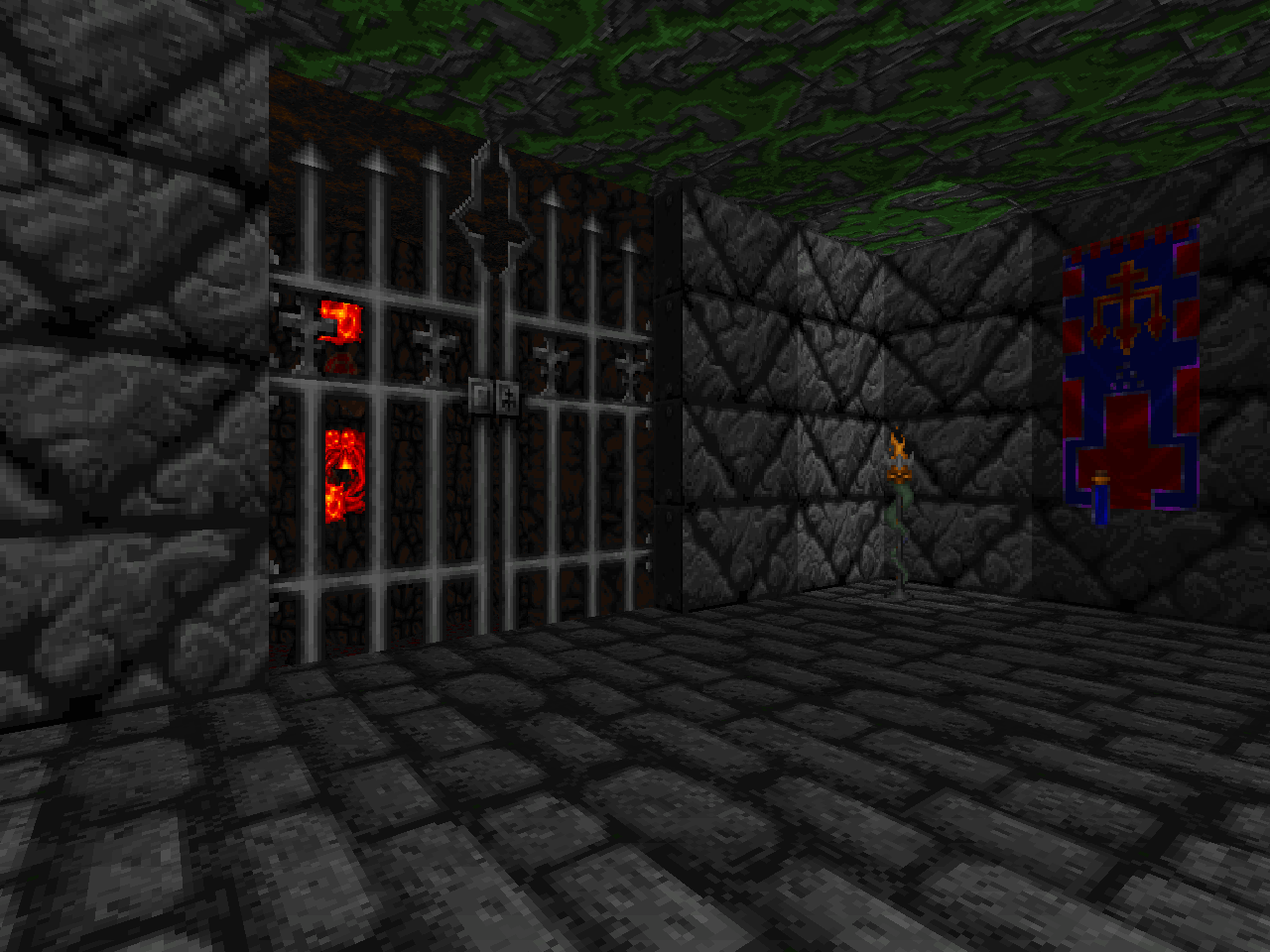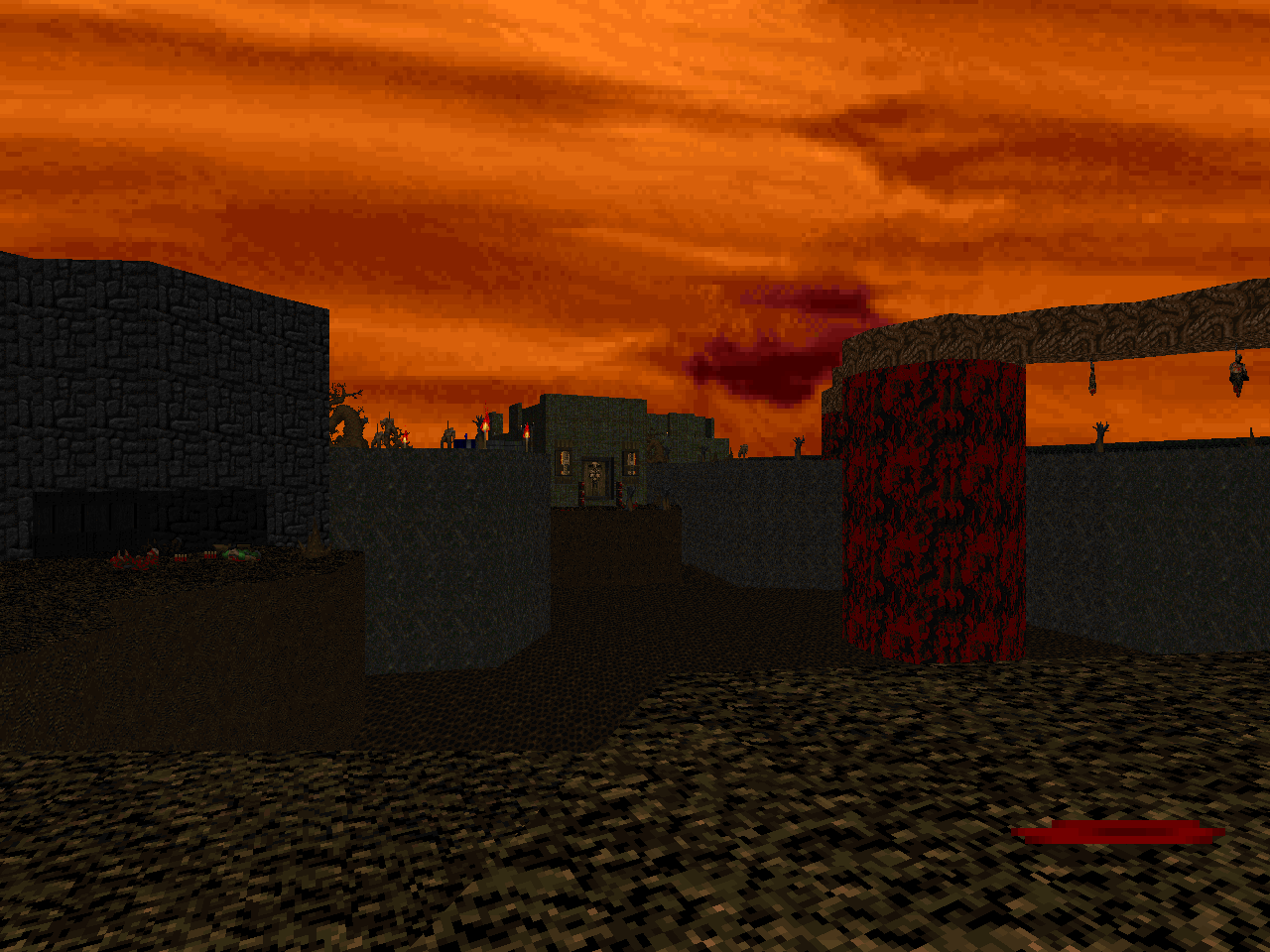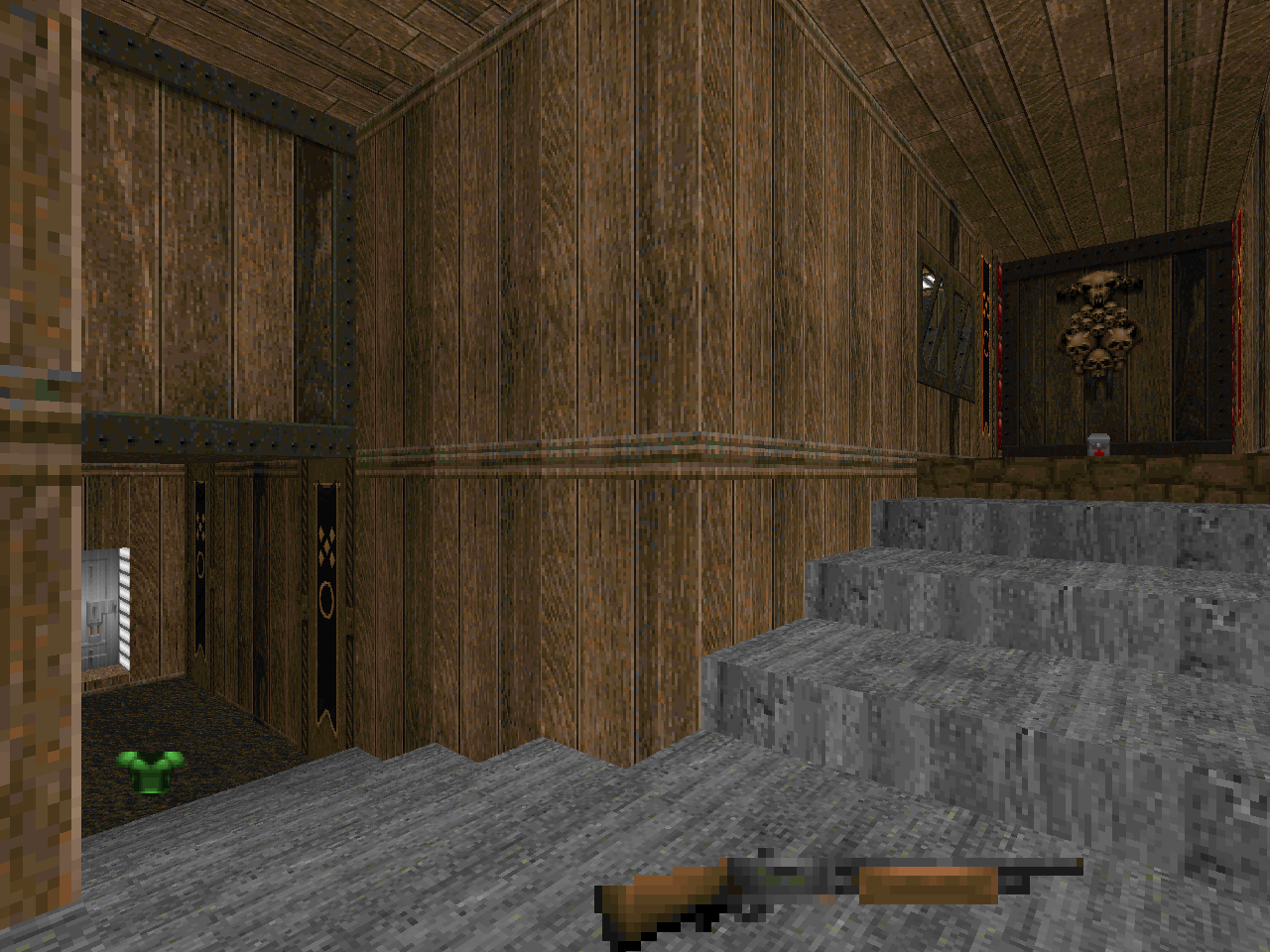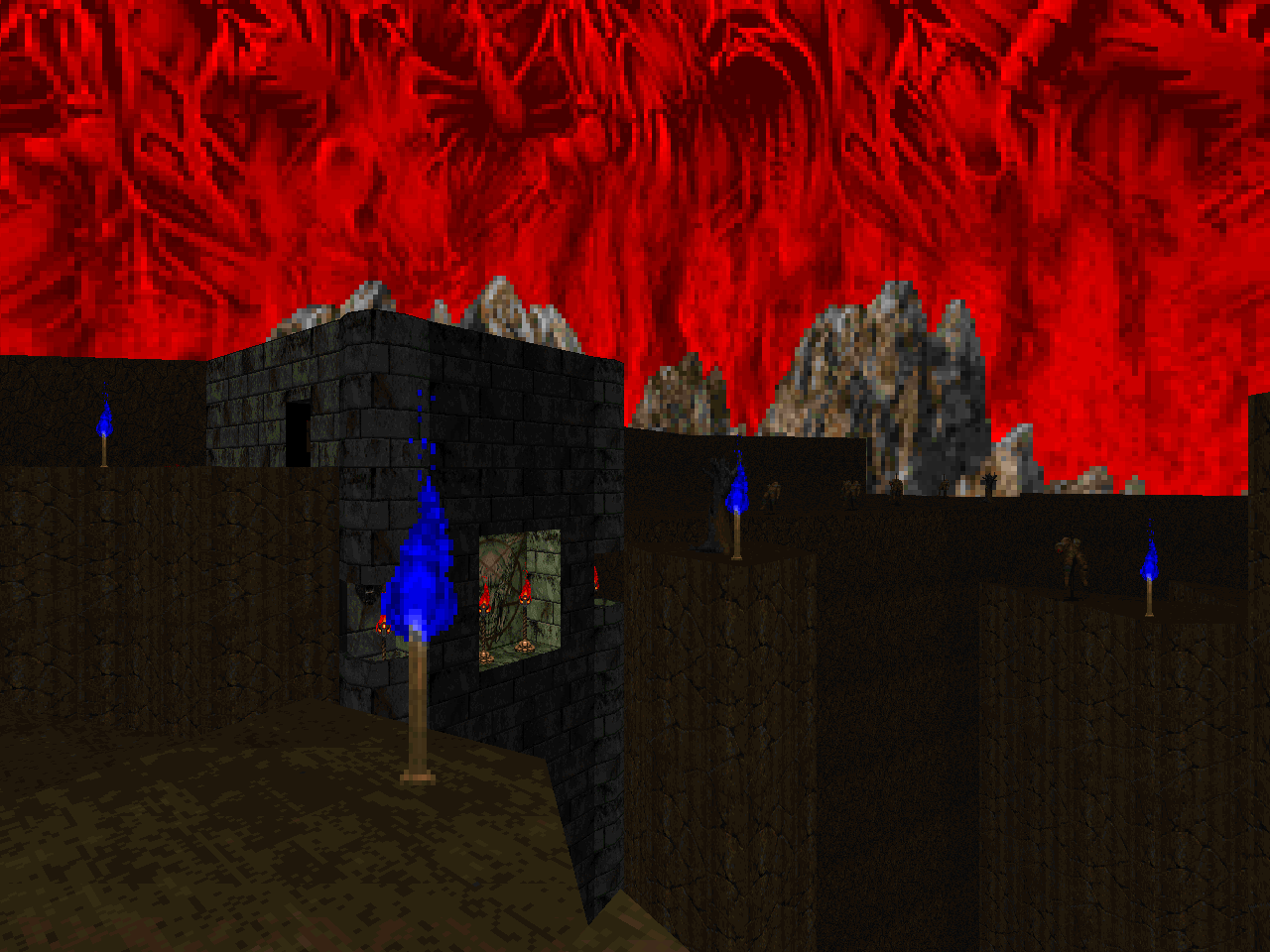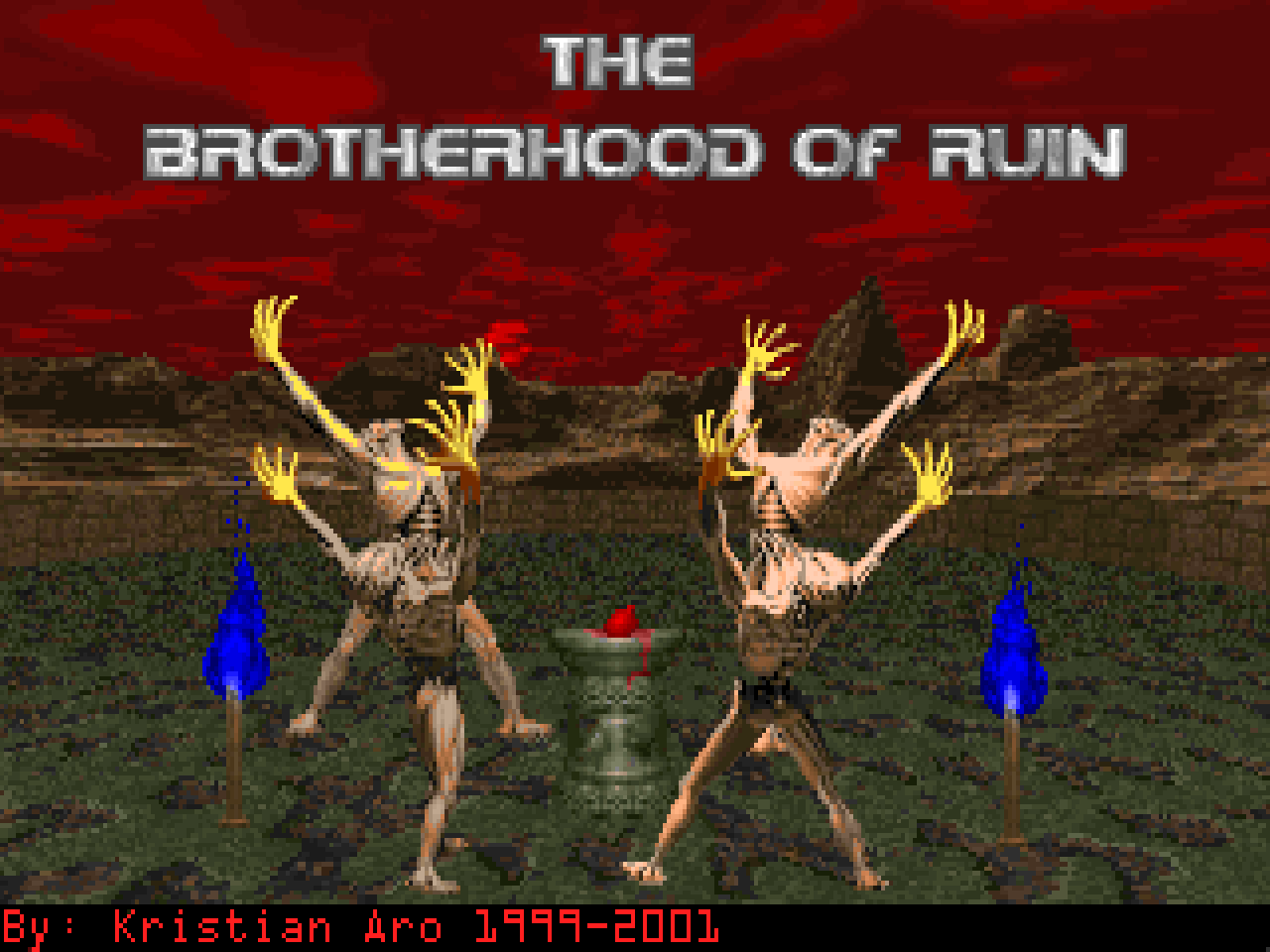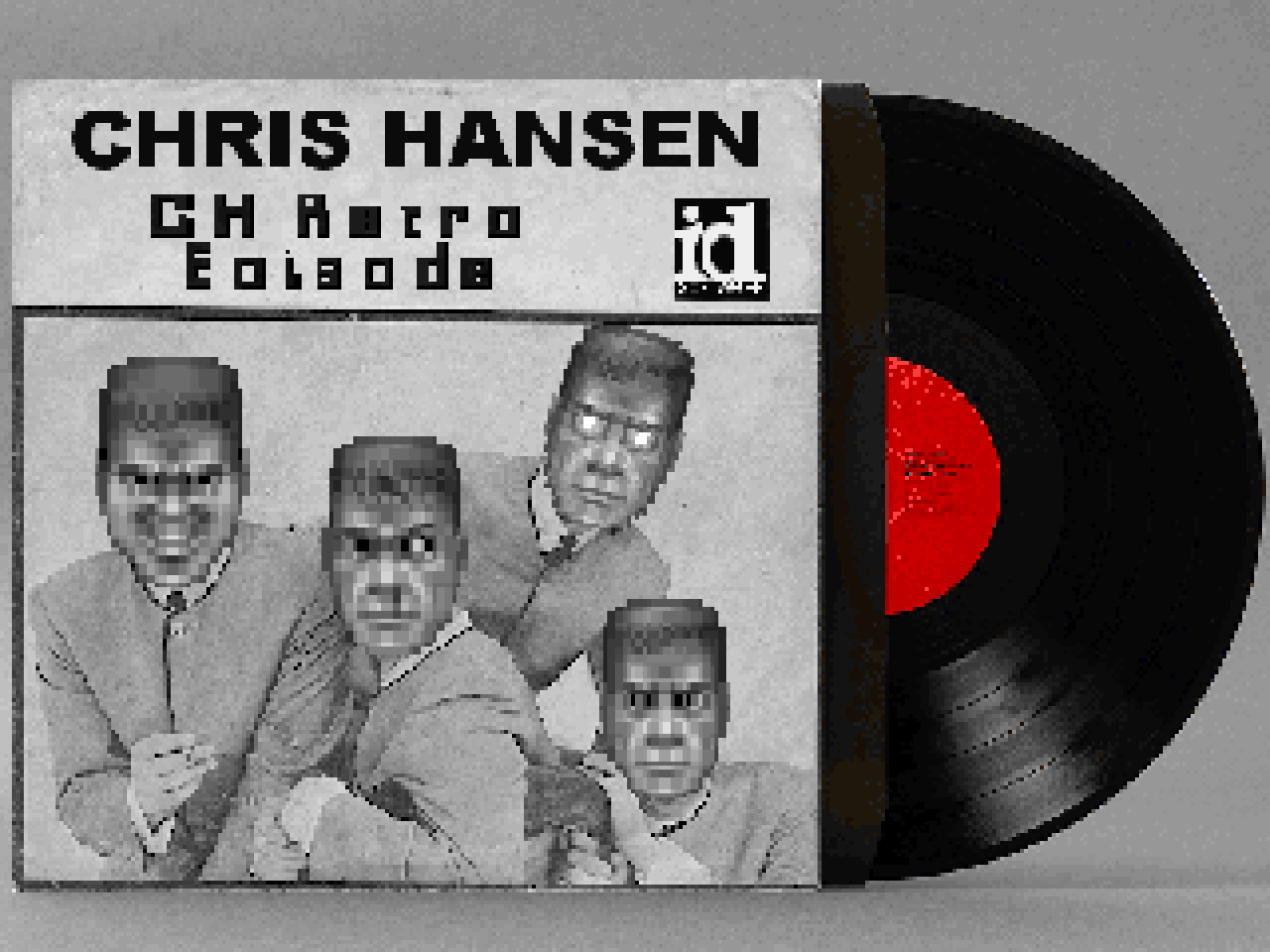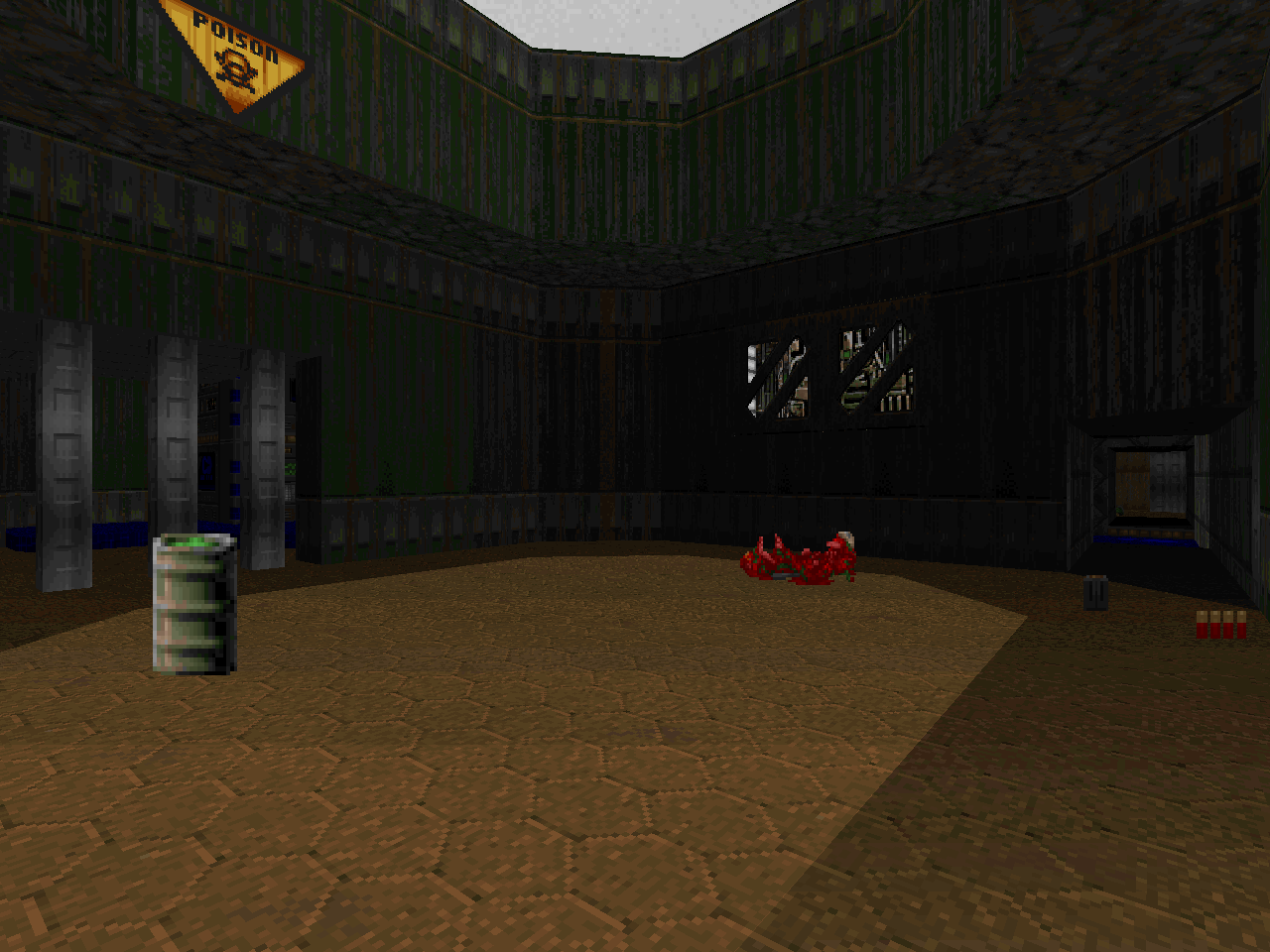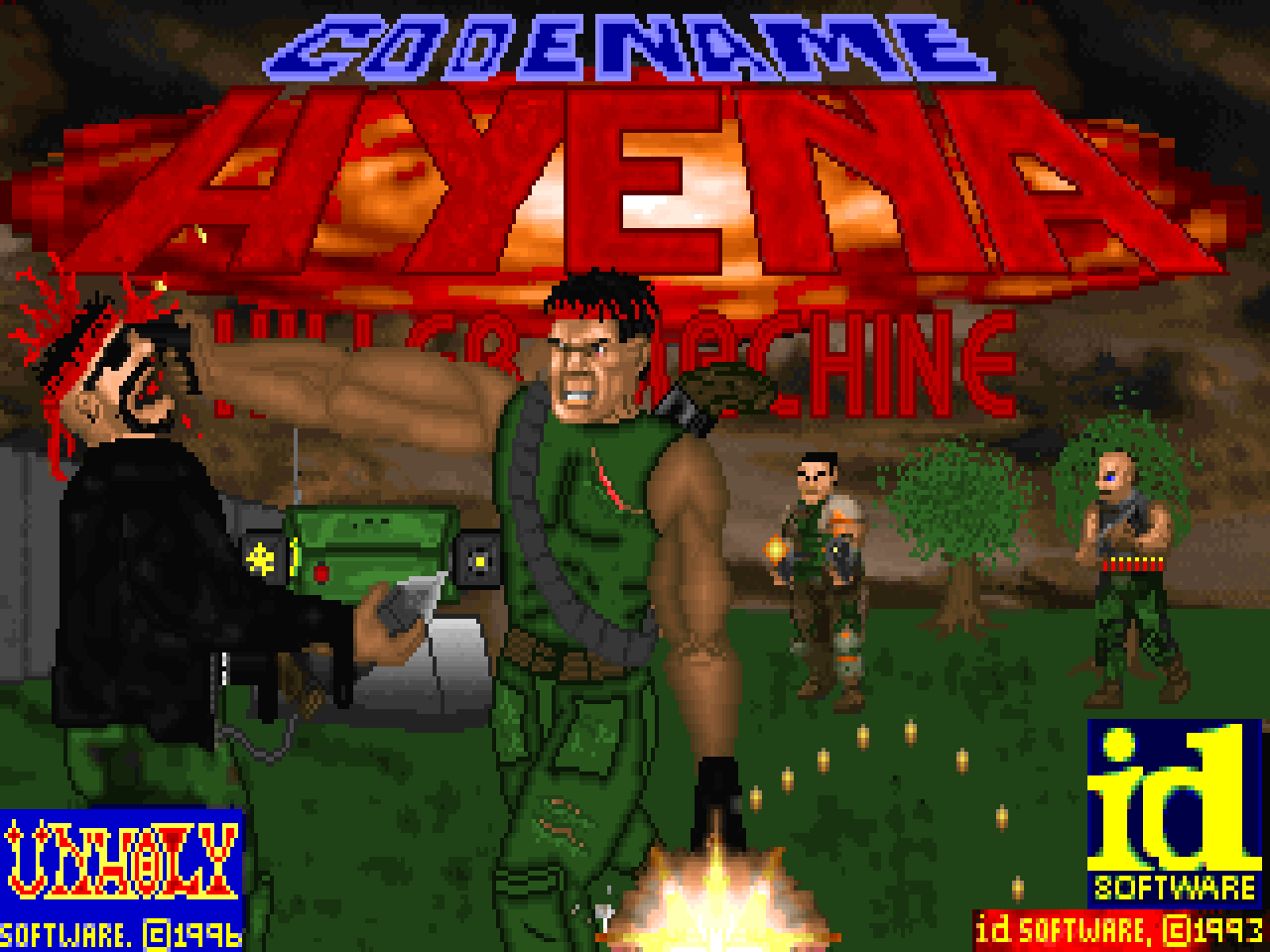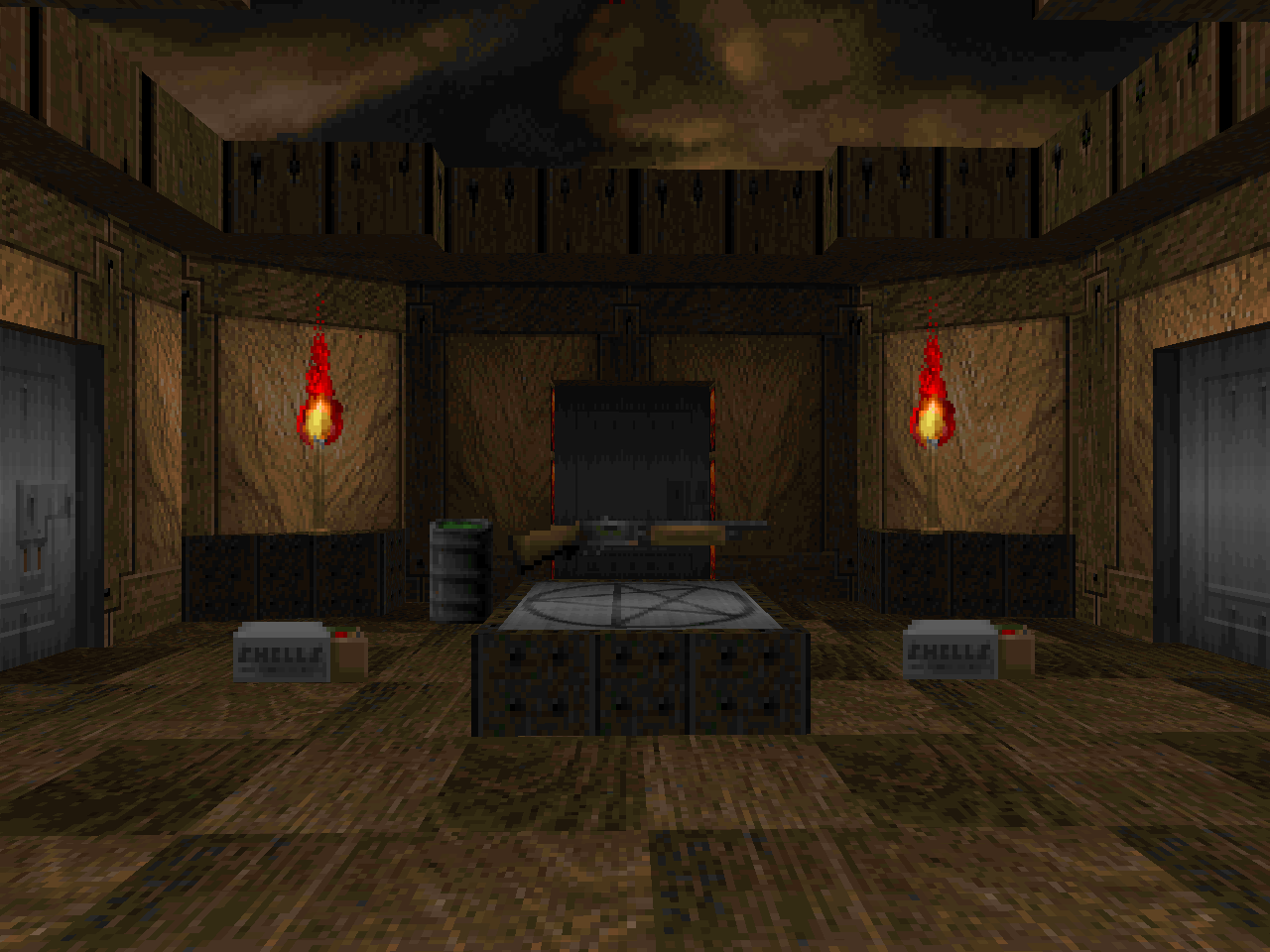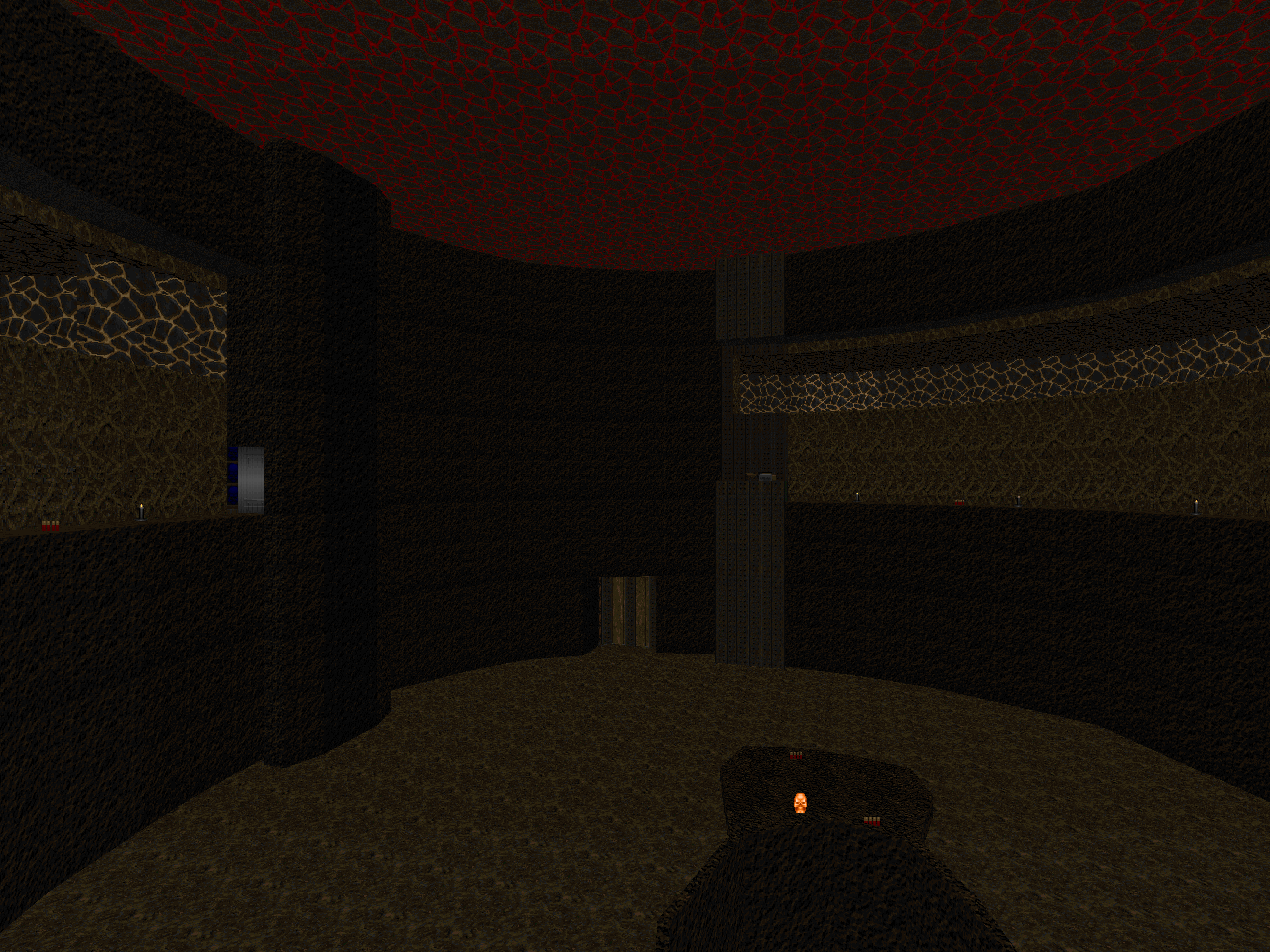The Chaos Crew may not have started out as Christopher Lutz's baby but it ended up that way. Three authors of incredible power - Chris, Pedro Puicón (NokturnuS), and Emil Brundage (NaturalTvventy) - were gathered together with one Joel Murdoch. The last was a programmer during the source port boom and had his hand in a lot of engines that were created for the sole use of one Doom mod. You know, stuff like Mordeth, Millennium, and Eternity. He also worked on Caverns of Darkness which has a leg up on the previous three projects because it was actually released some sixteen years ago as of this writing. Published in 2002, it's a twelve-map episode for Doom II. We have been spared from having to use its custom source port because of Graf Zahl's painstaking work in translating its effects to ZDoom with an indispensable patch.
Since id Software released Doom in 1993, thousands of user-made WADS and maps have been and continue to be created for the Doom community's entertainment.
These are their stories.
Sunday, December 30, 2018
Thursday, December 27, 2018
Not In My Courtyard (MAP18MEM.WAD)
NOT IN MY COURTYARD
by "Memfis"
The author's previous release, Sticky Blood, featured a yard as the vast majority of its playing area. Here, Memfis is a bit more literal. 2011's Not In My Courtyard wears its inspiration on its sleeve. It's inspired by Doom II's MAP18, occupies the same slot and thus leverages the burning city sky of the second episode, and uses a FreeDoom track that's a slowed-down derivative of "Waiting For Romero to Play". There are definite differences, though, which you'll find out as you make your way through. My memory of the original isn't perfect but I'm pretty comfortable in saying that this Russian remodel is much harder.
Monday, December 24, 2018
No Sun Series
THE NO SUN SERIES
by Malcolm Sailor
as featured in Super Serials
| NOSUN | NOSUN2 |
| NOSUN3 | NOSUN4 |
| NOSUN5 | |
Malcolm is much better known for his CHORD series - specifically CHORD_NG, CHORDG, and CHORD3 - but he had another span of single-level releases that spanned from 1996 to 1997. The NOSUN levels are an interesting bridge between his early works, which felt increasingly aligned with the authors of Master Levels for Doom II, and his time spent working as part of Black Star Coven and John Bye. I assume that both Bye and Anderson served as an influence in the way Sailor approached lighting as detailing. While the location / adventure-oriented level design did not survive through to the final stage of his authorial career it's an interesting period to consider.
Labels:
1996,
1997,
Doom II,
Malcolm Sailor,
NOSUN series,
Series
No Sun 5 (NOSUN5.WAD)
NO SUN 5
by Malcolm Sailor
1997 was Malcolm's big year. It marked the release of The Talosian Incident, where roughly nine levels worth of his work made their big debut; the start of his CHORD series, responsible for three of the other entries in Doomworld's Top 100 WADs of All Time; and the end of NO SUN, a run of five maps that attempted to tell Sailor's most cohesive story. The whole thing wrapped up at the end of April with NOSUN5, a MAP27 replacement for Doom II. The author is pretty proud of it but acknowledges one if its potential shortcomings. If you're a fan of the works of John Bye, though, or enjoyed the narrative action of TALOSIAN, then you'll have no issue here.
Labels:
1997,
Doom II,
Malcolm Sailor,
No Sun series,
review,
single map
Wednesday, December 19, 2018
DemoniZed (DEMONIZD.WAD)
NokturnuS doesn't have the most visible legacy (barring the Top 25 "snub" list, which was conceived of after I had already written this review) but he did participate in two PWADs that were selected as part of Doomworld's Top 100 WADs: 10 Sectors, where he initially tied for first place, and Caverns of Darkness. He is quite fondly remembered by demo recorders, though, getting accolades from the likes of Erik Alm (Scythe and other challenging / definitive releases) and Yonaten Donner (Hell Revealed). I knew his 1998 episode - Realm of Shades - by reputation and recommendation but DemoniZed was one of those curious discoveries made while delving through an author's back catalogue. Released later during the same year, DEMONIZD is a two-map minisode for Doom II and it's made to be played in the Boom engine.
Friday, December 14, 2018
Realm of Shades (ROS.WAD)
NokturnuS has never been explicitly enshrined in the Doomworld mythos (at least, up until Doomworld's 25th Anniversary!) but he has two claims to fame. Perhaps his most notable accomplishment is his "Black Wind of Mayhem", which tied for first place in Doomworld's 10 Sectors competition and was only relegated to second by way of a tie-breaker. The other bit is assisting Chris Lutz with 2002's Caverns of Darkness alongside Emil Brundage, aka "NaturalTvventy". Pedro is a post-Golden Age author whose name frequently crops up in underrated lists much like Angelo Jefferson and his Number One Kill: The Next Generation. Most of this retroactive hype comes from Realm of Shades, a seven-map episode for Doom II that was released in 1998.
Tuesday, December 11, 2018
Assault On Chextropolis (CQAOC.WAD)
ASSAULT ON CHEXTROPOLIS
by "Stormwalker" aka "Vordakk"
As of this writing I haven't reviewed the original Chex Quest trilogy but I did play some of it quite a bit and still have the CD that I got out of the box. I even went so far as to download CQ2 and distinctly recall something claiming to be CQ3 where the first level resembled an archaeological dig site. If you're a diligent fan and remember what I'm talking about (because it doesn't look at all like the actually released third episode) then please tell me! Chex Quest still has a fan community though as far as popularity goes it looks like it's probably somewhere between Hexen and Strife when it comes to modding. Vordakk is one of those who still remembers which is why in 2018 I can play Assault On Chextropolis. It's an E1M1 replacement for the CQ3 IWAD and requires (G)ZDoom.
Labels:
2018,
Chex Quest,
review,
single map,
Stormwalker,
Vordakk,
ZDoom
Monday, December 10, 2018
Source Ports, IWADs, and PWADs
SOURCE PORTS,
IWADS, AND PWADS
This article was written under the assumption that the reader is entering the classic Doom community with little or no knowledge of its associated software.
The 1993 release of Doom was run through an executable program / application (.EXE). When you start it up, it looks for and then loads its associated .WAD file. WAD is an acronym - "Where's All the Data?" - and it contains all of the game's resources from music files to sound clips, sprites, textures, and the maps themselves. The longevity of the community stems from the ability of its members to:
- create their own WAD files
- make and edit new maps
- share these WADs, especially over the internet
- load it in the .EXE alongside the WAD that came with the game
The last operation patches the original's data as it is loaded, replacing and adding resources without having to permanently alter anything. For this reason, user-created WADs are typically referred to as PWADs (P = Patch) and the commercial files are called IWADs (I = Internal / Initial).
Labels:
tutorial
Sunday, December 9, 2018
No Sun 4 (NOSUN4.WAD)
NO SUN 4
by Malcolm Sailor
1997 was the year where it all started to come together for Malcolm Sailor. He was starting to get a lot more positive feedback, particularly on his No Sun material; he was working with John Bye as part of Black Star Coven to produce The Talosian Incident; and while he didn't know it at the time, his soon-to-be-released CHORD series would cement his legacy in the Doom community's history. Here, though, it's still early 1997 and he hadn't quite triumphed over his mortal enemy, Tim Willits ("Dumb Fucker"). No Sun 4 is - you guessed it - the fourth entry in the NOSUN series. The biggest technical changeup is that it occupies the MAP07 slot as opposed to MAP01.
Labels:
1997,
Doom II,
Malcolm Sailor,
NOSUN series,
review,
single map
Tuesday, December 4, 2018
FULL ON (FULLON.WAD)
FULL ON is an eight-level Shores of Hell replacement and was originally released by Tim Ackroyd in late 1994 but did not make it to the /idgames archive until 2005. A lot of the time this was because the early Doom diaspora was spread out across tons of hosting spaces; there are still things that are lost to the sands of time because of draconian distribution clauses or no one backing up the servers before they started falling one by one. There's another angle to FULLON, though. The last three levels - E2M6, E2M7, and E2M8 - are slightly modified copies of the original Doom's E1M7 ("Computer Station"), E1M9 ("Military Base"), and E2M8 ("Tower of Babel"). These had to be excised before the patron saint of oldstuff, FunDuke, could inter it alongside the rest of the community's output.
Sunday, December 2, 2018
No Sun 3 (NOSUN3.WAD)
NO SUN 3
by Malcolm Sailor
by Malcolm Sailor
You probably know him best for the CHORD series but young Malcolm had quite the storied career from 1995-1997 before laying out the material that would enshrine him in Doomworld's Top 10 WADs for three different years in 1997, 1999, and 2000. It's almost all single level releases, though, even if a good number of them (13) were gathered together as separate PWADs in .ZIP packs. NOSUN3 is the third entry in a series that started in 1996. This release marks Sailor's first official step into the '97 era though I can only assume that he was also working on The Talosian Incident during the same period since it was released a few months later in June. Like the first two installations, it's a MAP01 replacement for Doom II.
Labels:
1997,
Doom II,
Malcolm Sailor,
NOSUN series,
review,
single map
Tuesday, November 27, 2018
Legacy of Heroes (LEGHER.WAD)
1996 and 1997 marked the development period for one of my perennial favorite PWADs, Eternal Doom. There was a nominal time-travel element involved but most of its levels took place in sprawling, quasi-medieval settings. Legacy of Heroes is a spiritual successor of sorts. Released in 2016, gaspe took some of its base particulars insofar as its story and texture set and fabricated an eleven-level mapset for Doom II to be played in Boom-compatible ports. LEGHER includes a small epilogue in the MAP11 slot but it doesn't include any substantial gameplay; certainly not any combat.
Saturday, November 24, 2018
dead.air (DEAD-AIR.PK3)
dead.air
by Xaser Acheron
In 2015, Tormentor667 hosted the Doomjá-vu competition where authors attempted to take a generalized layout of E1M7 and then twist it to their own desires. This was where Xaser produced dead.wire, a creepy level that was swamped with static and leveraged textures from Chasm: The Rift. dead.air's roots are ultimately buried in a dump of assets made by then-RNG breadbug now-breadguyfly. He submitted to another competition, this one hosted by Joel of Vinesauce. Both works interestingly ultimately took 2nd place in their respective events. The very basics remain the same, too, since this is also a MAP01 replacement for Doom II to be played in GZDoom. If it sounds like there are a lot of similarities then let me assure you that they're largely superficial.
Labels:
2016,
2017 Cacowards,
Doom II,
GZDoom,
review,
single map,
xaser
Wednesday, November 21, 2018
Brigandine (BRIGANDINE.WAD)
BRIGANDINE
by Aline "Viggles" Bee
Back in 2015, Viggles made an explosive return to the Doom community - after only having released a few deathmatch levels back in 1996 - with the publication of Breach. The first of a two-part series, it began as a single level but had to be split because it was on the verge of exceeding the extended limits of most source ports. Brigandine isn't the fairly-anticipated sequel but it is another MAP01 replacement for Doom II for limit-removing ports, this time released in 2017. Bestor's original conception was a "quickie" given the scope of the work they'd performed for Breach but the end result appears to indicate that every map of them is capable of becoming a long, torrid love affair.
Labels:
2017,
2017 Cacowards,
Alun Bestor,
Doom II,
limit-removing,
review,
single map,
Viggles
Sunday, November 18, 2018
Sticky Blood (STCKBLOD.WAD)
STICKY BLOOD
by "Memfis"
Memfis somehow established a reputation - one that he wasn't necessarily happy with - of producing short, relatively low-key levels and drawing inspiration from classic releases. Sticky Blood, a MAP01 replacement released in 2011 to be played in a limit-removing port, is small but I would not describe it as remotely laid back in its action compared to his previously-released Kashimir. Like most of his publications there is a complete lack of a framing narrative so it's up to you to decide where you want to fit in the Doom II multiverse. Since it uses the third sky from Thomas van der Velden's Revolution! you could make an argument for it taking place in the realm of the Old God, Chaos. Not to be confused with Realm of Chaos.
Labels:
2011,
Doom II,
limit-removing,
memfis,
review,
russian,
single map
Thursday, November 15, 2018
No Sun 2 (NOSUN2.WAD)
NO SUN 2
by Malcolm Sailor
While he did most of his mapping during his early teens, MS is primarily known for his CHORD series because of its soul-crushing difficulty and gorgeous, detailed environments. If you forget about his contributions to The Talosian Incident then you might be surprised to find him responsible for another series, this one actually attempting to draw a narrative through its action across a grand total of five entries. NOSUN2 is understandably the second level and was re-released in 1997 though I strongly suspect that it was originally published toward the end of 1996. Like most of the levels released by Malcolm, it's a MAP01 replacement for Doom II.
Labels:
1996,
1997,
Doom II,
Malcolm Sailor,
No Sun series,
review,
single map
Thursday, November 8, 2018
Castle of the Hengs (CASTHENG.WAD)
Back when I started playing Doom again I had a bunch of review sites bookmarked with the express intent of finding obscure but memorable stuff on the larger end of the scale. One of these was Geniac's Doom WAD Playlist. The descriptions aren't very thorough but they give you a brief picture. One of the interesting PWADs that I wasn't able to locate on the archive was CASTHENG by "James XIII". Back when the entry was made it was logged as consisting of fourteen "tough scary castle levels". After I sent out a feeler in 2012 in the "Trying to Find a Specific WAD" thread on Doomworld, The Mad Butcher delivered and provided me with a copy. I was surprised to discover that Castle of the Hengs had been further developed to the point of replacing MAP01-MAP30 of Doom II.
Monday, November 5, 2018
Idle Doom: Tech Breakthrough (IDLEDOOM.WAD)
IDLE DOOM
TECH BREAKTHROUGH
by "Albertoni"
I've "played" a few idle games. Cookie Clicker was my first but I've also enjoyed the depth of Realm Grinder and Clicker Heroes. If you've never played one then you're not missing out on much. The ultimate objective is to earn more of the game's currency. The process never really ends but idlers tend to have some sort of prestige mechanic where you can reset your progress for long-term benefits that accrue over time so you can have days of milestones to reach. This helps to keep at least one carrot on a stick in front of the player at all times. Idle Doom is an interesting experiment that explores the very basic mechanics behind these clicker games within the framework of ZDoom. There's at least one significant difference: you can actually reach an end.
Friday, November 2, 2018
Sequel to Quick is Good (QUIKISG2.WAD)
SEQUEL TO QUICK IS GOOD
by Malcolm Sailor
MS began with DARKER in 1995 and then slowly honed his authorial skillset into the perfectionist machine that crafted the CHORD series. It's most fondly remembered for its last two levels, published in 1999 (CHORDG) and 2000 (CHORD3). In 1996, the author was beginning to indulge in longer maps with a more developed story by way of his NOSUN series but he still had a strong affection for Short and Hard levels. Enter the imaginatively-titled Sequel to Quick is Good, antecedent to QUIKISGD. It and NOSUN2 might just be the last things that he released in 1996. QUIKISG2 is a MAP01 replacement for Doom II, much like the majority of Malcolm's levels.
Friday, October 26, 2018
Hell Medley (MEDLEY.WAD)
Hell Medley was uploaded to the /idgames archives in 2005 but it was available elsewhere as early as April of 2003. It will probably remain the relatively obscure first work of a Czech powerhouse who went on to tag team Kama Sutra with soul brother Jakub Razák; rescue Plutonia 2 from the disinterest of Sam Woodman; and might right now be polishing the almost-finished KS2! I'm talking about Adolf Vojta, of course. MEDLEY was originally ADA and is a collection of the author's earliest levels (initially crafted in elementary school and then tweaked during HS) spread out over the original Doom's first three episodes plus one from his friend who introduced him to WAD editing. The final product includes sixteen maps replacing E1M1-E1M3, E1M8, and E1M9; E2M1-E2M9; and E3M1 and E3M9.
Tuesday, October 23, 2018
Skull (SKULL.WAD)
SKULL
by Malcolm Sailor
The young MS has left behind a sizable collection of levels for Doom II but you might not know that he crafted a paltry single map for the original. Skull is an E1M1 replacement released in 1996 after the dual publication of Go Away and NOSUN, the latter starting its similarly-titled series. It's interesting to see Malcolm try his hand at a format that's far more restrictive than the palette of monsters found in the Doom II rogues' gallery. What would his combat be without the screaming revenants, oppressive arch-viles, or corpulent mancubi and arachnotrons? Can you even live without the constant threat of a chaingunner suddenly appearing? Err, nevermind the last one.
Thursday, October 18, 2018
Abyssal Speedmapping Session 4 (ABYSPED4.WAD)
ABYSPED4, made and released in 2014, marks a fairly important progression point for Abyssal Speedmapping. Doom map authors get together in these events (originally on group Skype sessions) and then make levels over the span of two hours with some additional time for nuts and bolts adjustments. The size of the event went from drawing a scant four to seven to a whopping thirteen participants, reaching roughly the same number as Doomworld's first exercise back in 2001. It's even more interesting when you consider that these sessions, initially hosted by then-newcomer Obsidian, originated as jams involving a now-defunct forum called The Abyss that was hosting exiles of the then brutally mismanaged NewDoom community.
Monday, October 15, 2018
No Sun (NOSUN.WAD)
NO SUN
by Malcolm Sailor
MS was a fairly prolific author of maps if not at the same production rate as workaholic wunderkinds like Paul Corfiatis. His biggest claim to fame was his CHORD series, probably followed by his contributions to The Talosian Incident as part of Black Star Coven. The former showcased outstanding architecture, lighting, and grueling combat while the latter had him developing short but scene-setting levels to further a narrative through the limitations of idtech1's gameplay. His work on TALOSIAN may have ultimately directed his talents toward the aesthetic of the CHORD levels but I'd like to think that NOSUN - a MAP01 replacement for Doom II who also kicks off its own sequential series - is the work that caught John Bye's attention.
Labels:
1996,
Doom II,
Malcolm Sailor,
NOSUN series,
review,
single map
Friday, October 12, 2018
Kashimir (KASHIMIR.WAD)
KASHIMIR
by "memfis"
There are a few things that I've observed to be more or less consistent through memfis's authorial career. He prefers to make small levels; draws inspiration from older PWADs; and is fascinated by the works of outsider groups. I believe that all of his solo releases are in packages of six levels or less and Kashimir is no exception. Published in 2011, it's a MAP01 replacement for Doom II meant to be played in any executable. The author has mined two particular sources and both are cited in the accompanying .TXT - the infamous Nuts, and the community's capstone for the golden age, Requiem.
Tuesday, October 9, 2018
Go Away (GOAWAY09.WAD)
GO AWAY
by Malcolm Sailor
The man who composed the CHORD series had a pretty meager start to his authorship (DARKER) but by his third major release - DS-61-3.ZIP, a collection of six PWADS packaged in a .ZIP file - he was making maps that would have easily fit among the Master Levels for Doom II. GOAWAY09 furthers his trend. Originally uploaded alongside the beginning of his NOSUN series in 1996, this MAP01 replacement eschews the Quick is Good philosophy made manifest in the previous release and aims at something a fair bit larger if not just as challenging. He didn't abandon his direction toward short bits of action; more on that later in SHRTHARD.
Thursday, October 4, 2018
MAYhem 2012 (MAYHEM12.WAD)
The good news is that TheMionicDonut's MAYhem became an annual institution where mapsets - sometimes a megaWAD's worth - are created. The unfortunate news is that its completion / polishing phase inevitably runs over the monthly time frame. MAYHEM12, for instance, saw its final release in November of the same year while MAYhem 2013 hung around until March of 2014. It isn't much bad news at all, though, especially considering how long projects usually languish on hard drives. The community still gets a brand new collection of levels to play and the contributing authors get to flex their muscles in a theme that they might not have otherwise experimented with. In this case it's twelve Boom-compatible levels for Doom II.
Saturday, September 29, 2018
Doom 2 Minor Sprite Fixing Project (SPRFIX19.ZIP)
DOOM 2 MINOR
SPRITE FIXING
PROJECT
by "Revenant100"
id kickstarted a legendary legacy of user-created content, all built on a set of rock solid assets. Plenty of people not satisfied with Doom's lo-res aesthetic have tried their hand at trying to re-make the textures and sprites to something more pleasing to them, with the latter typically resulting in unintentionally hilarious 3D models or painstakingly smudged upscales. I initially thought the original look to be pixel perfect but over the years I've noticed a handful of imperfections only to simply accept them as the quirks of doing business. Enter the Doom 2 Minor Sprite Fixing Project, a deep dive of the base resources. Revenant100 corrects these very issues as well as a host of things that casual - perhaps MOST - players have probably never noticed.
Monday, September 24, 2018
Inferno (INF-LUTZ.WAD)
I was actually much more familiar with Chris Lutz's Heretic levels than the stuff that made him a legend in the Doom community which is interesting to me since they now represent a whopping 6% of his career. Reclamation and Torture stand right before a veritable winning streak of Caverns of Darkness, Phobos: Anomaly Reborn, The Dying End, and Icebound. Of course, I don't mean to downplay his contributions to 10 Sectors, Doom the Way id Did, and No End in Sight, not to forget the (as of this writing) recently published Hellscape and Dark Tide. The craftsman is a hitmaker and it all started with this Episode 3 replacement released in 1998, the imaginatively-titled Inferno.
Wednesday, September 19, 2018
KILL! Zone Episode One: The Trek Begins (KZ#1.WAD)
Once a year or so someone starts a "Most Underrated WADs" thread on Doomworld and it seems like Donald Howard's Kill! Zone (and its sequel, KILLZON2) are perennial favorites. Don's fanciful publishing house was Heuristic Software, though whether he had anything to do with the then defunct chess game company is beyond me. A reading of the now archived Team TNT roster reveals that he is also the same Don Howard who contributed three levels to Daedalus: Alien Defense. His debut, Vile-Lab, is apparently lost to the sands of time. KZ#1 is a seven-map episode for Doom II and was published in 1996. The author did not bother attempting to establish any semblance of a narrative but if it bears any relation to the tongue-in-cheek follow-up then each of the maps represents a separate bastion of Hellspawn rather than a single adventure with multiple stages.
Friday, September 14, 2018
Water Spirit (WATRSP.WAD)
burabojunior's levels formed much of the backbone of the Japanese Community Project, featuring thrilling action on an aesthetically pleasing canvas. I loved the hidden temple aesthetic of "Riminishi Valley", the orbital platform journey culminating in "Escape From UAC Space Base" backed by Stuart Rynn's "Jailbreak", and the puzzle-driven lethal neon of "Resplendent Emerald Green". Water Spirit, a three-level Doom II minisode for Boom-compatible source ports, was his 2017 follow-up and in fact first solo release to the archives. I kind of knew what to expect from its look since I'd seen few screenshots in its thread but I could not have guessed where the gameplay would head.
Labels:
2017,
2017 Cacowards,
boom,
burabojunior,
Doom II,
minisode,
review
Tuesday, September 11, 2018
Waterlab GZD (NJWLGZD.PK3)
WATERLAB GZD
by Nigel "Enjay" Rowand
The Legacy engine got a lot of interesting features during the source port boom. Some of them didn't even last for the engine's lifetime. One to stick with Scottish sensation Enjay was a warping effect for stuff seen under the surface of water, demoed in a small level entitled WATERLAB. It so intrigued him that he felt compelled to flesh the tech showcase out but in doing so he hit upon the likely cause of its disappearance from Legacy's feature set. When the strain became too much for the engine to bear, he shipped the project to GZDoom. The end result is a MAP01 replacement for Doom II designated Waterlab GZD and if there is any doubt in your mind, rest assured that it is much larger than the original.
Labels:
2017,
2017 Cacowards,
Doom II,
GZDoom,
Nigel Rowand,
review,
single map
Monday, September 10, 2018
Rest In Peace, John W. Anderson
If you haven't already heard the news then I regret to inform you that Dr. Sleep (John W. Anderson) died in April of 2018 of pneumonia. Anderson didn't make a great many levels compared to his fellow Master Levels for Doom II authors but his dedication to detailing as it pertains to texture alignment and lightcasting solidified him as one of the early cornerstones of PWAD design. While he had numerous other accomplishments during his lifetime of 61 years (including design credits for Blood, Unreal, Kingpin, and Daikatana), he had quite a few that are specific to Doom.
More information is available on the DoomWiki if you're interested in reading more about this early pillar of the community. As for myself, it's sad to know that two of the six Master Levels authors are gone, both within a month of each other, but I'm glad that his family stopped by to let the community know of his passing.
- John was responsible for the Inferno series of single map releases. While most of them ultimately became part of commercial products, the freely-available ones (Dante's Gate and Crossing Acheron) were acknowledged early on as outstanding examples of PWADs so much that the latter became immortalized as one of Doomworld's Top 10 WADs of 1994. These works were an early influence on many authors including in my own personal experience Malcolm Sailor and Paul Corfiatis.
- Because of the quality of the first two levels, five of the rest - Virgil's Lead, Minos' Judgement, Nessus, Geryon, and Vesperas - became part of the Master Levels for Doom II project. Their appearance helped to cement the gothic brick and metal style but the more subtle influence is the proliferation of his simple, starry night sky in other user-created PWADs. These levels were also included in the Playstation's Final Doom, forming a significant portion of the initial impression and no doubt leaving an impact on people whose Playstation console experience remains definitive.
- The last of the Inferno levels, CHIRON, managed to make its way into The Ultimate Doom as a part of its additional fourth episode, Thy Flesh Consumed ("And Hell Followed"), and is thus likely the most widely-played of his output.
- John's least-known level - apart from the never-realized Lethe, which would have concluded the Inferno series - is almost certainly a Heretic level titled Recant.
More information is available on the DoomWiki if you're interested in reading more about this early pillar of the community. As for myself, it's sad to know that two of the six Master Levels authors are gone, both within a month of each other, but I'm glad that his family stopped by to let the community know of his passing.
Thursday, September 6, 2018
Back to Hell E1 (BTHE1.WAD)
Tomi Rajala had his heyday during Doom's source port boom, demonstrating the power of ZDoom's early features when he released The Hell Factory Hub One in the year 2000. He also showed his capacity to make longer, single levels with Painful Evil during the same year. Back to Hell (not to be confused with Dave Seager's episode of the same name) appeared to be his passion project and was potentially a megaWAD for Doom II but the author never finished it and the only evidence of its existence was a review of a seven-map demo by Colin Phipps on Doom Underground. I put out a feeler to see if anyone still had a copy lying around on their hard drive and Grazza obliged. Surprisingly, his version was slightly less unfinished for a grand total of nine levels! This exchange happened back in 2013 so I am happy to be playing the demo now in TYOOL 2018 so that it can finally stop riding my conscience.
Saturday, September 1, 2018
Rip It, Tear It, Smash It! (RITESMIT.WAD)
Chris didn't know it when he started to help Paul out on 2002: A Doom Odyssey but he was beginning a love affair with the Ultimate episodes that has gone on until - as of right now - his Shores of Hell-themed collection, Monument, released in 2015. While most of his contributions to 2002ADO were styled after Thy Flesh Consumed, he did squeeze out "Obituary Written" for E3 and "Station Beta" for E2 before moving on to Phobos-style stuff (CH Retro Episode). Rip It, Tear It, Smash It! is a pair of Deimos-influenced oddities, uploaded to the archives at the end of 2002. As was the case with his Knee Deep in the Dead tribute, these E2M1 and E2M2 replacements have no associated story and could just as easily be tacked on to Doomguy's continued adventures through the Doomed base.
Labels:
2002,
Chris Hansen,
deimos,
doom,
Doomworld's Top 10 WADs of 2002,
minisode,
review
Sunday, August 26, 2018
2002: A Doom Odyssey (2002AD10.WAD)
Paul Corfiatis released a ton of maps during 1998 and 1999 and then slipped into the background for a bit. You saw a few glimpses of his work making the lineup for the 10 Sectors 2 megaWAD and he also released a few solo levels as part of his Selfish series, but he was working on much bigger things. The first was as a contributor to the ill-fated Doom: Millennium project which he started taking to task in the .TXTs that accompanied his contemporary releases. The other was 2002: A Doom Odyssey, a megaWAD for the Ultimate release replacing all four episodes and featuring the collected works of eight authors... even if pcorf is responsible for half of them.
Labels:
2002,
Anthony Soto,
Chris Hansen,
doom,
Doomworld's Top 10 WADs of 2002,
Joe Pallai,
Kristian Aro,
limit-removing,
megawad,
Paul Corfiatis,
review,
Rory Habich,
Sam Woodman,
Vick Bobkov,
ZDoom
Thursday, August 23, 2018
Firetop Mountain (FTMTN_V2.ZIP)
FIRETOP MOUNTAIN
by Glen "glenzinho" McColl
by Glen "glenzinho" McColl
The Fighting Fantasy series of books were a British innovation from the two dudes that founded Games Workshop, primarily responsible for WarHams as well as my favorite tabletop game of all time, HeroQuest. The works were choose-your-own adventure books but they also folded in pen and paper RPG elements for a more interactive experience. The Warlock of Firetop Mountain was the first of these volumes and it inspired a young glenzinho enough to make a single level for Doom II. The end product is a MAP01 replacement for GZDoom but it's a very big adventure with a monster count that swells as a result of scripted spawns.
Saturday, August 18, 2018
MAD STUFF FOR DOOM 2 (MAD.WAD)
In 2002 Paul Corfiatis had contracted a case of jokeWAD fever. Sure, the first glimpses were there with Elliot Goblet in 2001. SPACIA crystallized another side of pcorf, though, one looking to get some laughs from the community through absurdity whether it be porn in otherwise unremarkable space levels, garish MSPaint textures, or cumbersome sound replacements. MAD STUFF FOR DOOM 2 continues the trend in a different direction. The set attempts to leverage the simple AI of the monsters in order to fabricate situations where the player does not even need to fire a single shot and avoids both the smut and, for the most part, hideous colors. The .WAV files, however, are here to stay.
Labels:
2002,
Doom II,
episode,
jokewad,
limit-removing,
Paul Corfiatis,
pcorf,
review
Saturday, August 11, 2018
SPACIA: A Silly DOOM Space Adventure (SPACIA.WAD)
2002: A Doom Odyssey is fondly remembered by a multitude of players, enshrining a stable of authors - Paul Corfiatis, Kristian Aro, Christian Hansen, and others - in the minds of many. SPACIA is much less so. Released earlier in the same year, this twenty-two level Doom II mapset followed Elliot Goblet in marking the beginning of pcorf's jokeWAD period. If bearing witness to someone's clumsy attempts at humor in the idtech1 engine is not your cup of tea, especially when it's rife with senseless softcore pornography wall textures, then you can safely sit this one out.
Monday, August 6, 2018
0scraps (0SCRAPS.WAD)
Paul Corfiatis is one of the community's most prolific authors and it's only natural that a dude who had released nearly a hundred levels from 1996 through 1999 would have some unfinished stuff that he was just disinterested with. Enter 0SCRAPS, a Doom II episode pulled off of pcorf's drawing board and released in early 2002 alongside Spacia: A Silly Doom Space Adventure. The compilation has a total of nine levels, two of which were clearly designed for deathmatch and appear here in their eerie, deserted glory.
Friday, August 3, 2018
Elliot Goblet (GOBLET.WAD)
ELLIOT GOBLET
by Paul Corfiatis
pcorf didn't have a whole lot to show in 2001 but his Doom Odyssey was in development and while he failed to make its obvious target date it did get finished the next year in 2002. In the meanwhile he published a few bits of things that don't really reflect his catalogue as a whole but probably helped to serve as a sort of relief valve during 2002ADO's development. Elliot Goblet is the least of these things, a MAP01 replacement for Doom II that only has two monsters, neither of which you can kill yourself.
Labels:
2001,
Doom II,
jokewad,
Paul Corfiatis,
pcorf,
review,
single map
Tuesday, July 31, 2018
Candy Choppers (PC_HERT1.WAD)
CANDY CHOPPERS
by Paul Corfiatis
1999 was a really big year for pcorf. After releasing a veritable glut of levels including The Twilight Zone II as well as Death Tormention and its sequel, he released three individual levels (the first-created entries of his Selfish series) in 2000 and cranked out a handful of submissions for the 10 Sectors contest. Four of them made it into the runoff compilation, 10SECTO2, uploaded in 2001. Candy Choppers, published later in the year, takes things in a completely different direction. It's Paul's token Heretic level! It presumably works with its vanilla executable and occupies its E2M1 slot.
Labels:
2001,
doom,
Heretic,
Heretic mod,
Paul Corfiatis,
pcorf,
review,
single map
Saturday, July 28, 2018
SELFISH3 (SELFISH3.WAD)
SELFISH3
by Paul Corfiatis
The first two levels of pcorf's Selfish series saw their initial release in 2000. The following year saw the publication of the third, a MAP23 replacement. By this time the author had kicked his Ultimate megaWAD into full gear, though it was still known as 2001: A Doom Odyssey and not 2002, at which time it would finally find its way to /idgames. Paul compiled his trilogy a few months later for the first of several repackagings but for now I'm focusing on the originals. As with its siblings, SELFISH3 has no actual plot, but it would later garner the title of "Lethal Hideout".
Labels:
2001,
Doom II,
Paul Corfiatis,
pcorf,
review,
Selfish series,
single map
Wednesday, July 25, 2018
SELFISH2 (SELFISH2.WAD)
SELFISH2
by Paul Corfiatis
pcorf's Selfish series spanned the gap between his 1999 and 2001 releases and slowly metered out through 2005 before being collected into both vanilla and Boom episodes. The main conceit appears to have been the development of Doom II levels apart from a larger, collected work like The Twilight Zone and Final Dreams. SELFISH2 was of course the second publication by number though it appears to share the same release date as SELFISH1. It's a MAP22 replacement, initially uploaded in January of 2000, and as is the case with the rest of the series it has absolutely no fictive context.
Labels:
2000,
Doom II,
Paul Corfiatis,
review,
Selfish series,
single map
Sunday, July 22, 2018
SELFISH1 (SELFISH1.WAD)
SELFISH1
by Paul Corfiatis
In 1998 and 1999 pcorf dumped more PWAD levels on the Doom community than most authors do in their lifetime. In the year 2000, while he was assisting with the Millennium project, it was time to take a break. Enter the Selfish series, a run of single-level releases dating from Y2K to 2005. Paul eventually gathered all of the levels together as an episode and added some bells and whistles but for now I'll be focusing on the individual titles as I come to them. SELFISH1 is a MAP21 replacement for Doom II. While it would eventually gain an appellation of "Canyon of Lava", there isn't any sort of narrative embellishment to ground the action.
Labels:
2000,
Doom II,
Paul Corfiatis,
review,
Selfish series,
single map
Tuesday, July 17, 2018
The Brotherhood of Ruin (RUINBROS.WAD)
In recent years Kristian Aro is recognized more for his work with his soul brother, Paul Corfiatis, but he was a pretty prolific solo author prior to joining up for Death Tormention II and later 2002: A Doom Odyssey. It's actually pretty fascinating to follow, from the very early and rough 20 Days in Hell to the functional 32 Hours in Pain, afterward hitting his stride with 1 Day of Hellish Revenge. The Brotherhood of Ruin found its way into Doomworld's Top 10 WADs of 2003 but its original date of release - wherever that happened to be - was 2001. It's a seven-map episode for Doom II, was designed to be played in Boom-compatible source ports, and is primarily themed around the ancient Mesoamerican temple texture set used in Hexen II's second hub.
Labels:
2001,
boom,
Doom II,
Doomworld's Top 10 WADs of 2003,
episode,
Kristian Aro,
review
Thursday, July 12, 2018
CH Retro Episode (RETROEPS.WAD)
Chris Hansen did a lot of work for Doom II and then ended up helping out his brother in arms, Paul Corfiatis, with making a megaWAD for the original. I don't know whether he was craving the creation of classically-themed maps prior to 2002: A Doom Odyssey but somewhere while hacking it out he was bitten by Phobos Fever. This project began life as a single level titled CH_RETRO in 2001 and after a lot of positive feedback it was expanded to a full Knee Deep in the Dead replacement as the similarly-titled CH Retro Episode. It was ultimately released after 2002ADO was finished but during the same year - 2002.
Labels:
2002,
Chris Hansen,
doom,
Doomworld's Top 10 WADs of 2002,
episode,
phobos,
review
Monday, July 9, 2018
CH Retro (CH_RETRO.WAD)
CH RETRO
by Christian Hansen
To the uninitiated, it may look as though Chris was indulging his Ultimate tooth prior to his work on 2002: A Doom Odyssey. His painstakingly arranged back catalog tells a different story, however. At the very least, Hansen had built no less than four levels for Paul's pet project before even starting his Retro Episode. While the final product saw release in 2002, the same year as 2002ADO and similar critical darling Rip It, Tear It, Smash It, it originally started as a single level before being incorporated as RETROEPS's E1M6 as "Primary Base". There's a slight parallel to The Classic Episode but CH_RETRO's development was far less publicly measured. This initial offering is an E1M1 replacement for the original Doom.
Labels:
2001,
Chris Hansen,
doom,
phobos,
review,
single map
Friday, July 6, 2018
Flay the Obscene - The Third (FLAYOBS3.WAD)
FLAY THE OBSCENE
THE THIRD
by Christian Hansen
THE THIRD
by Christian Hansen
The artist formerly known as c-cooper started out trying to build his one man megaWAD one level at a time before moving to a more sensible one and done pace. His Flay the Obscene series marked a return to a serial format, the first two entries seeing release in 1999 and 2000. The Third, published in 2001, would be the last... until 2014's Reversed. FLAYOBS3 is a MAP15 replacement for Doom II, almost certainly because the previous levels originally spanned from MAP12 to MAP14. It has no secret exit so I wouldn't waste my time looking for one but there is at least one cheeky jab at the player whose purpose I only just now realized.
Labels:
2001,
Chris Hansen,
Doom II,
limit-removing,
review,
single map
Tuesday, July 3, 2018
Phobia (PHOBIA.WAD)
PHOBIA
by Kristian "Ebola" Käll
Kristus started his authorship with pretty much the most ambitious project possible, a megaWAD total conversion. Codename HYENA: Killer Machine likely established its legacy mostly with the purveyors of the weird. The work that followed is what made him a Doom community legend. Phobia was originally released in 2001 and then greatly expanded over the course of five years, eventually published in 2006 as Phobia: The Age. Both were made to be experienced in Legacy but the original is a MAP01 replacement for Doom II. You may be wondering why I'm playing the single level release when there is, one may dare say, a superior version available. Blame it on an interest with its editorial history.
Labels:
2001,
Doom II,
Doomworld's Top 10 WADs of 2001,
Kristian Kall,
Legacy,
review,
single map
Thursday, June 28, 2018
ONEMANDOOM Rides Again
I've formally changed the title of this blog from Doomed: Doom WAD Reviews to ONEMANDOOM: WAD Reviews. ONEMANDOOM is usually how I've seen it introduced on the internet since that is its unique URL; it doesn't clash with the DooMed Speed Demos Archive (DSDA); and it has a nice, punchy rhythm.
The moniker came from the blog's original title, One Man's Journey Through Doom. The idea was to present it as my travelogue through the Doom community's offerings both past and present with the intent to emphasize that I am but one person offering an opinion on my own experiences. I didn't want to claim a monopoly on writing reviews even if I virtually had one by default. I certainly never thought that I would have taken a part in writing any of the Cacowards, though I remember thinking that it would be cool to be asked to write something for 2011.
I would like to think that I recognize where my writings over the past seven years have shaped the way that we as a community describe the experience of playing Doom levels. I also hope that by providing an example I have given others who might not even know where to begin a starting point so that they can feel comfortable discussing their opinions with their own, unique voices.
I thank you for reading ONEMANDOOM and I'd also like to thank the mappers, musicians, graphic artists, coders, writers, and anyone else who makes the Doom community such a treat to be a part of.
Tuesday, June 26, 2018
Codename HYENA: Killer Machine (HYENA.WAD)
Kristian Käll went on to major acclaim for his Legacy PWADs - Phobia, Ni'mRoD: IXNAY on the HOMBRE, and Phobia: The Age - and more recently his Heretic and Hexen projects, Curse of D'sparil and Curse of the Lost Gods. The first two happened during his tenure as a member of Unholy Software and their earliest release was a total conversion for the original Doom, published in 1998. Codename HYENA: Killer Machine gets mentioned every now and then but there's a hint of uncertainty behind the namedrops. It replaces the first three episodes of the original Doom - the last a decidedly Deathmatch dalliance - and has a fair bit of DeHackEd work in order to tweak the values of its core gameplay for a fairly different experience.
Labels:
1998,
doom,
Kristian Kall,
megawad,
Nimrod,
review,
total conversion,
Unholy Software
Thursday, June 21, 2018
Quick is Good (QUIKISGD.WAD)
QUICK IS GOOD
by Malcolm Sailor
by Malcolm Sailor
| SHORT AND HARD | ||
|---|---|---|
| Quick is Good | Baron Gate | Center |
The archive has QUIKISGD listed immediately after 3PACK_1 as far as release dates go but the .ZIP for its sequel, QUIKISG2, has a bibliography of sorts that calls a lot of things into question. I believe it to be an artifact of Sailor's penchant for updating stuff to fix bugs. In the previous year, 1995, he released a couple of single levels - DARKER and RULER - before a package of three individual outings including a new version of the latter solo venture (3PACK_1). All of his 1996 stuff is timestamped in July of that year but I couldn't tell you whether he was just storing PWADs like a camel, updated a bunch of stuff at the same time, or had one really productive summer vacation. I'm leaning toward the second.
Sunday, June 17, 2018
DS-61-3 (DS-61-3.ZIP)
DS-61-3
by Malcolm Sailor
| ALAPOLGY | FROMDREM |
| LAB | BOOM |
| WASTEME | SINFERNO |
I think it was way more common in the early days of Doom but it was still relatively uncommon to find someone who had uploaded a .ZIP that collected single-level PWADs. The biggest exception in my recent memory would be jazzmaster's 32-in-32 series. In any case, two of Malcolm's earliest - and largest - releases were done in this style of compilation. 3PACK_1 collected one earlier level for an update and added two for an odd three. DS-61-2 doubled the fun with six PWADs and this time they were all originals. Most of its contents saw an update in 1996 as part of the DS-61-3 package. Both are named after Darth Vader's wing men in the first Star Wars movie. Based on the timestamp for FROMDREM I'm pretty sure that the original date of publication was late 1995 but I would need a copy of the first release to verify my assumption.
SINFERNO (SINFERNO.WAD)
SINFERNO
by Malcolm Sailor
| DS-61-3 | ||
|---|---|---|
| ALAPOLGY | FROMDREM | LAB |
| BOOM | WASTEME | SINFERNO |
Seven levels in six WADs collected in one .ZIP file - that's DS-61-3. While every item has its own individual .TXT, only one of them goes unmentioned in the compilation's own information document - SINFERNO. It did find its way into some of Malcolm's WADographies, though, and is the last selection from its assemblage to be listed in QUIKISG2. The author didn't have much to say about it except to call it an okay Hell-themed level and mention that there were no changes between its re-release and the original, published in an earlier edition of the same package titled DS-61-2.
Labels:
1996,
Doom II,
DS-61-3,
Malcolm Sailor,
review,
single map
Subscribe to:
Comments (Atom)
